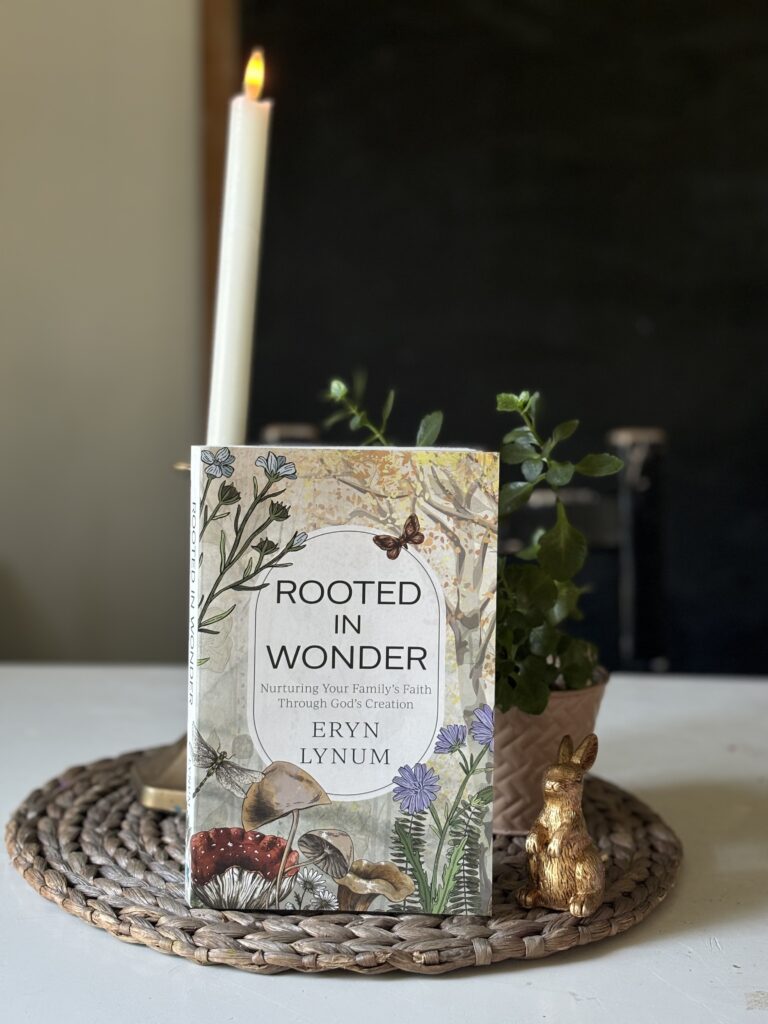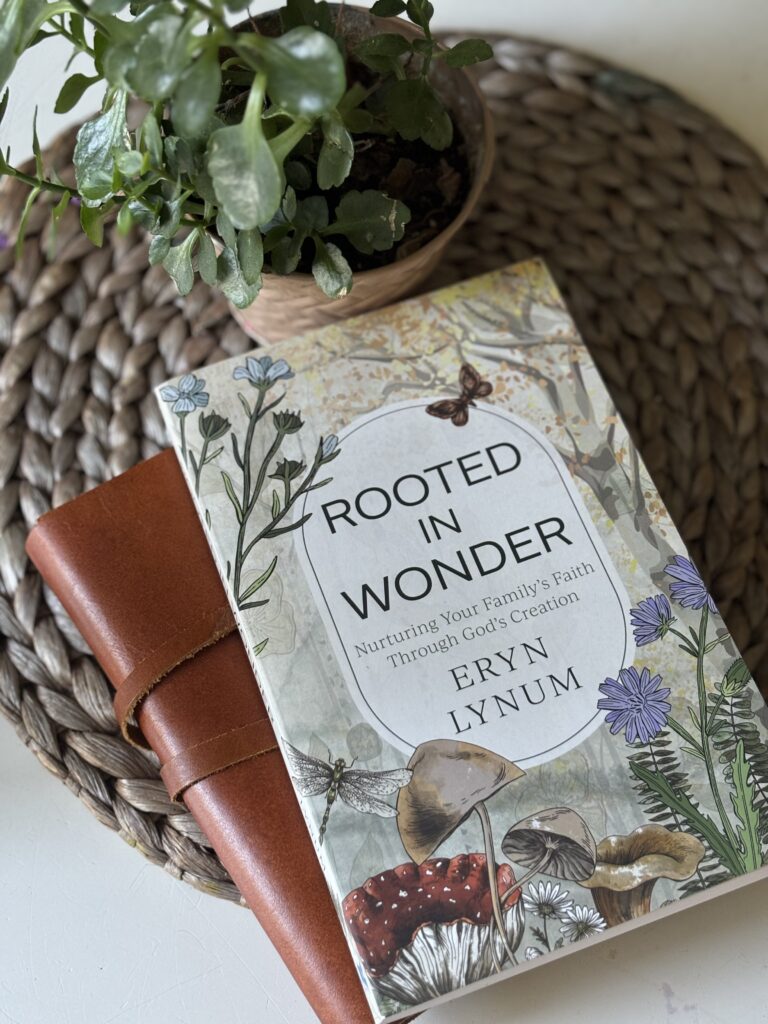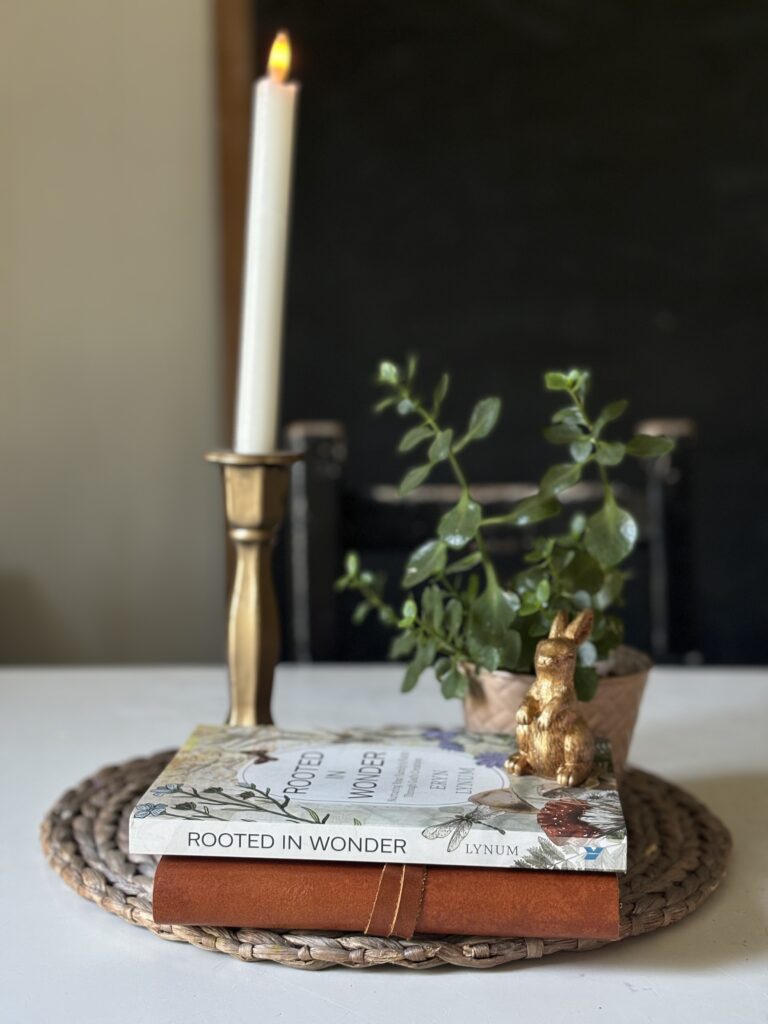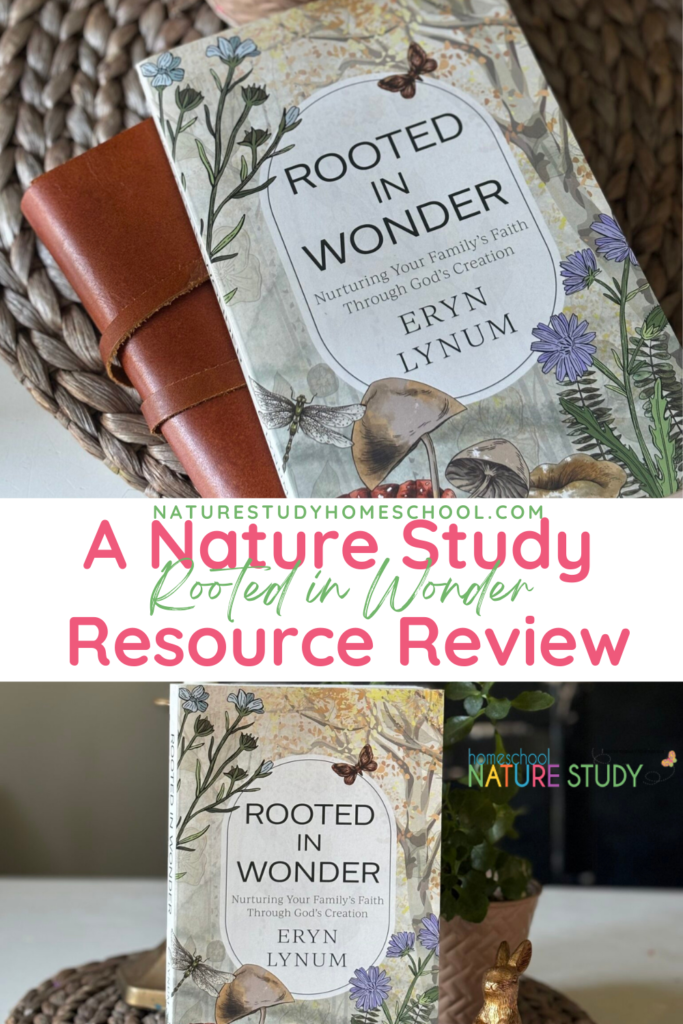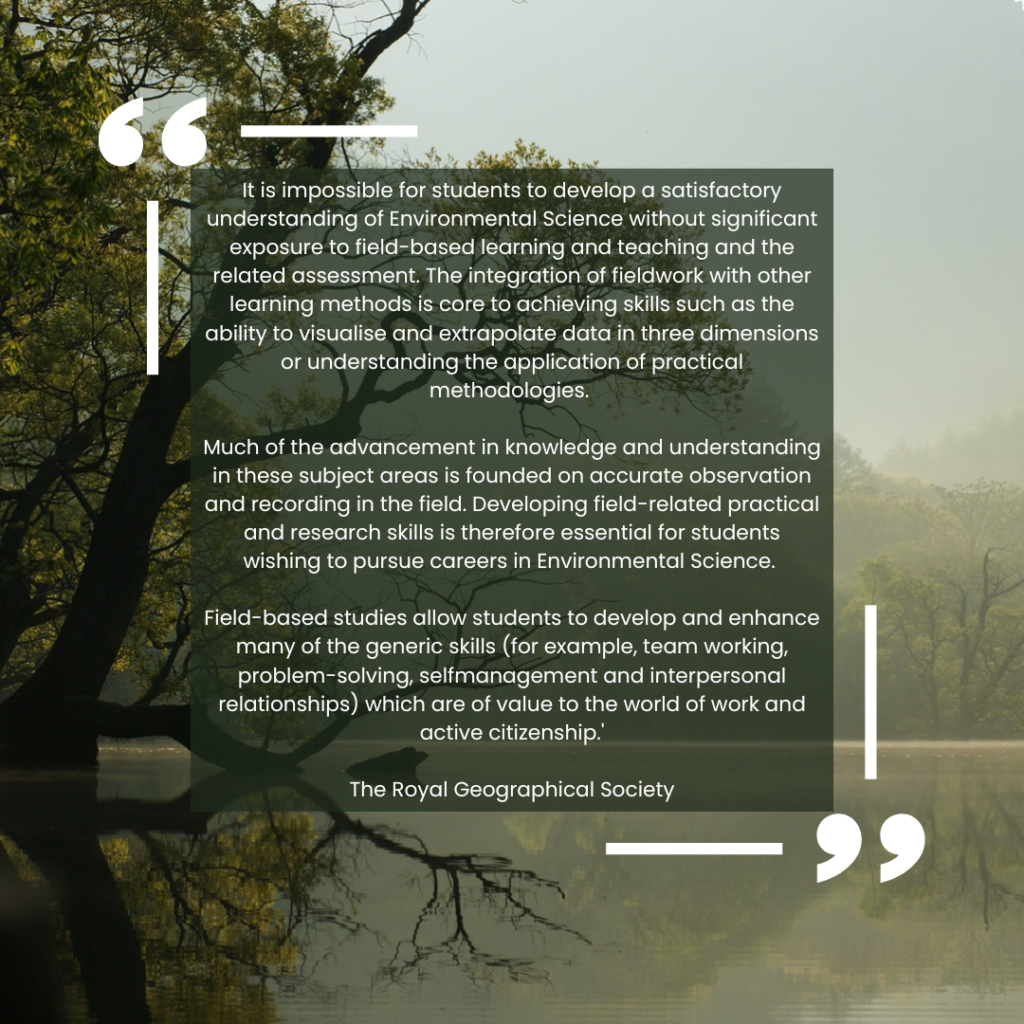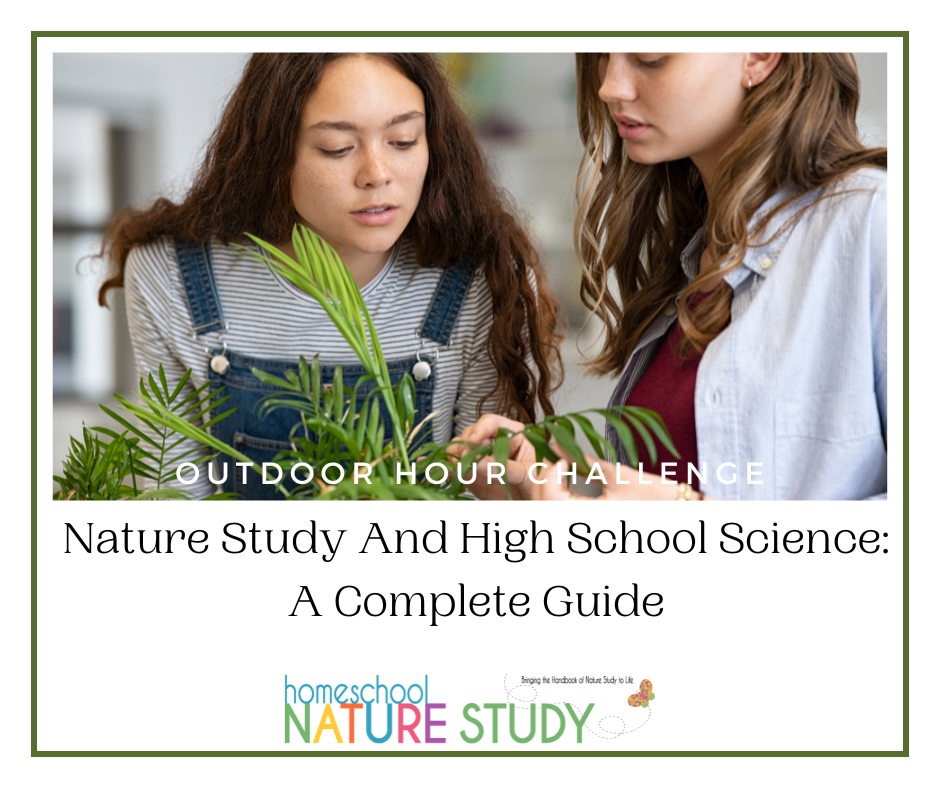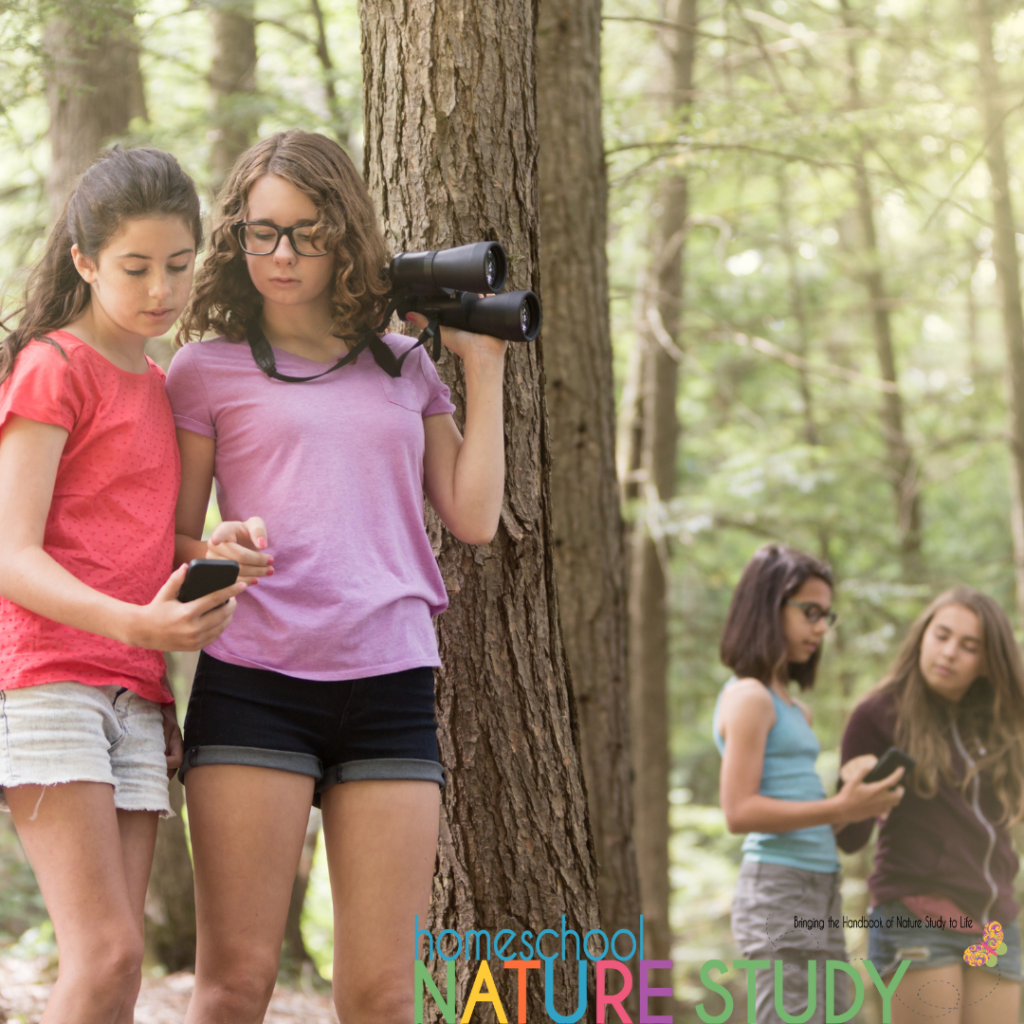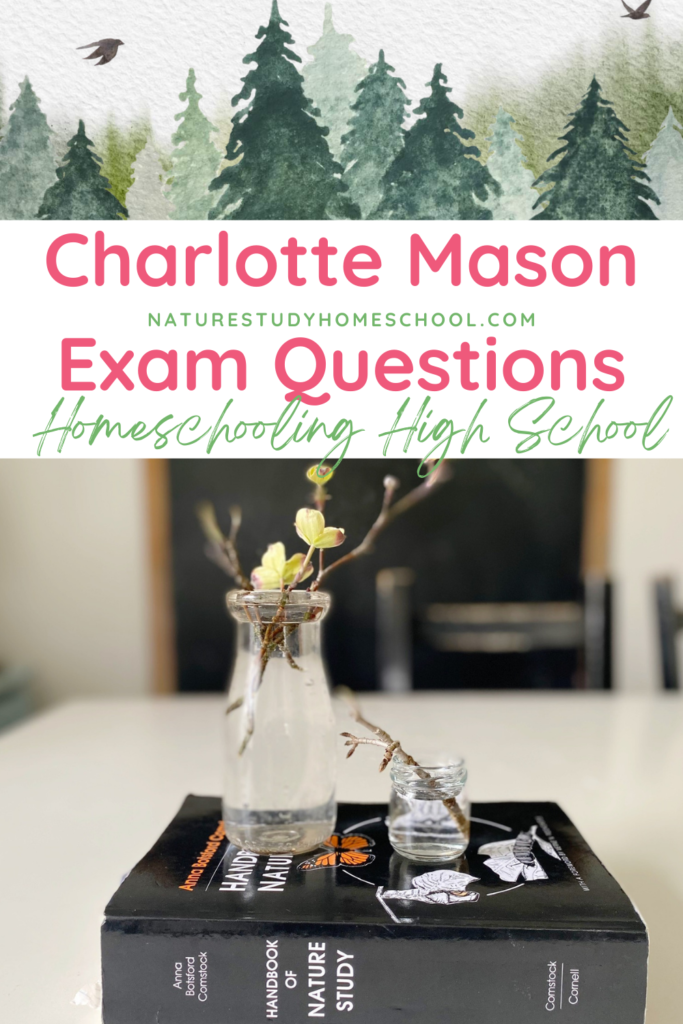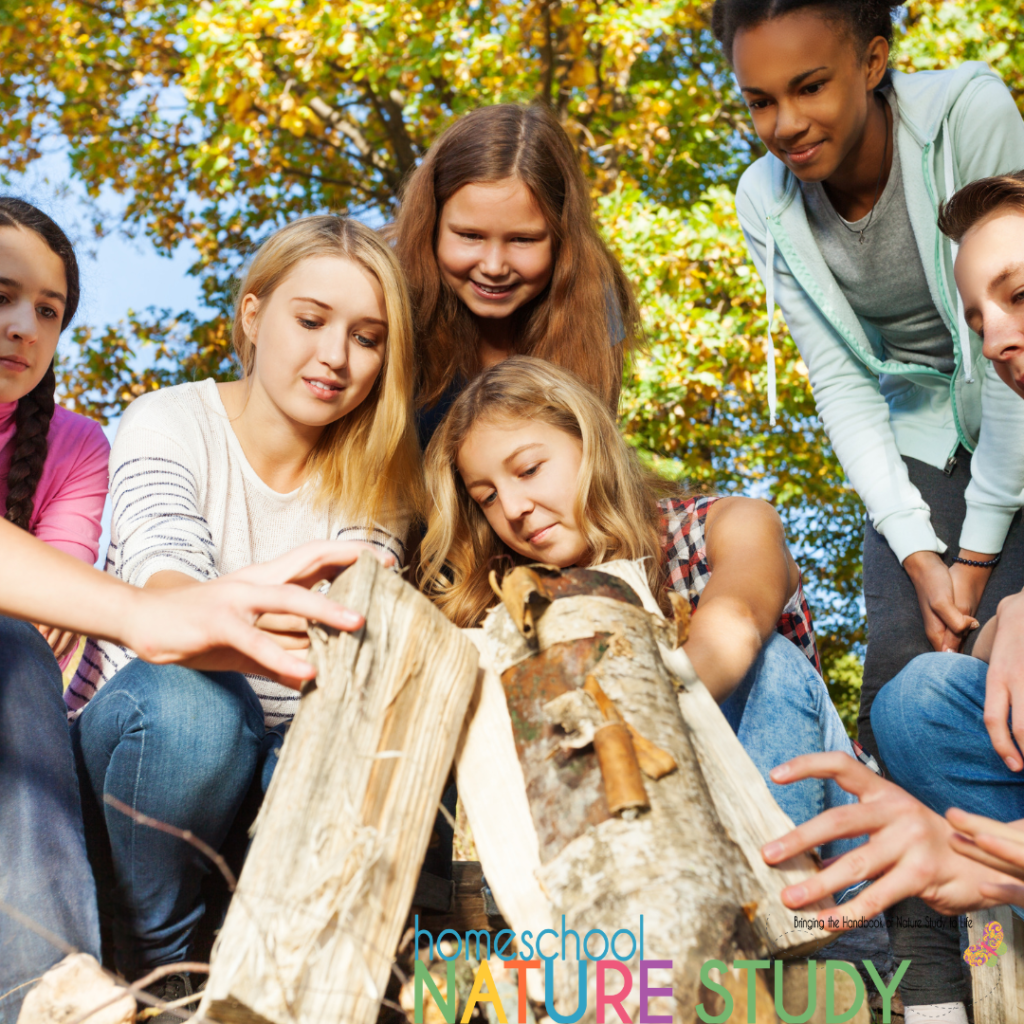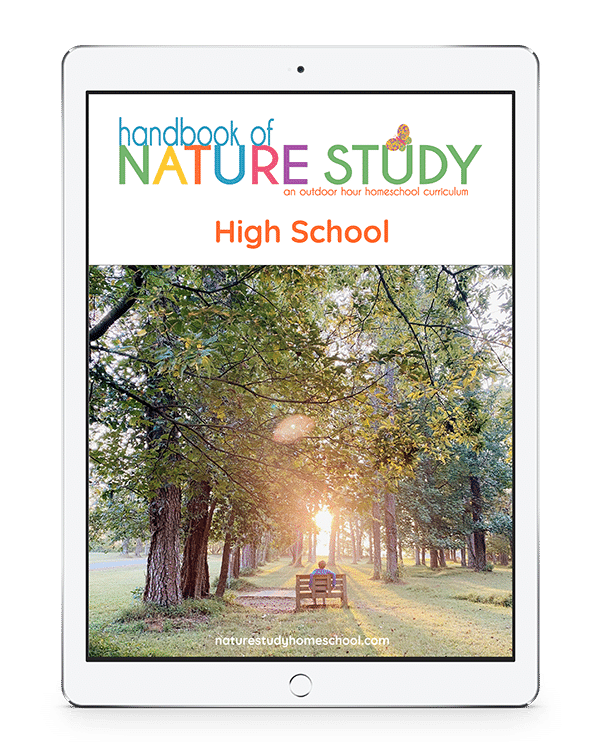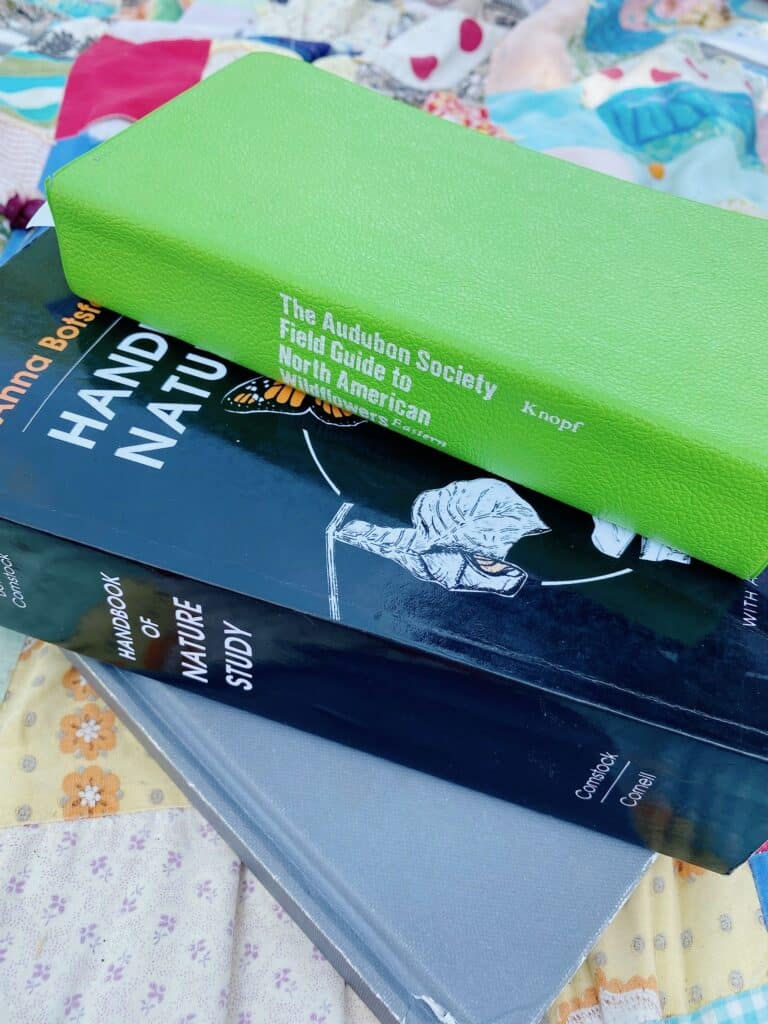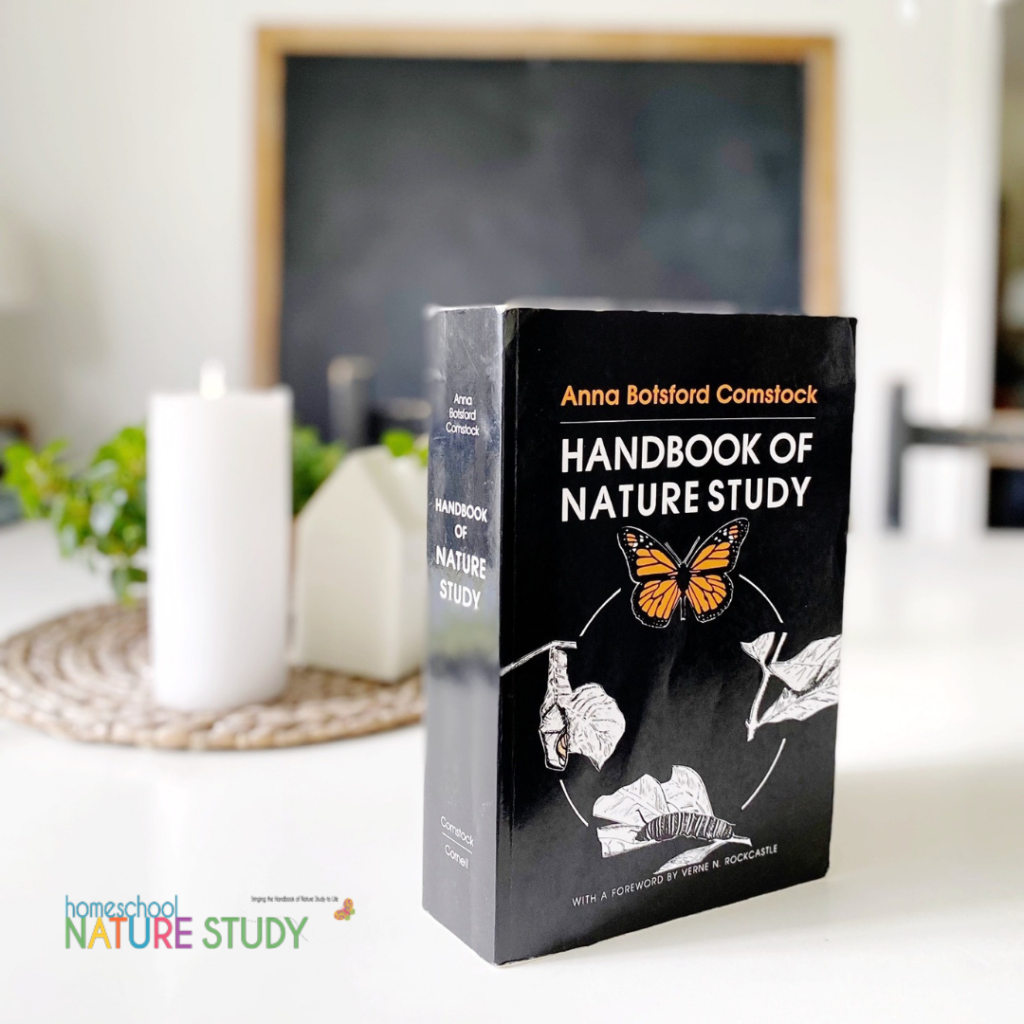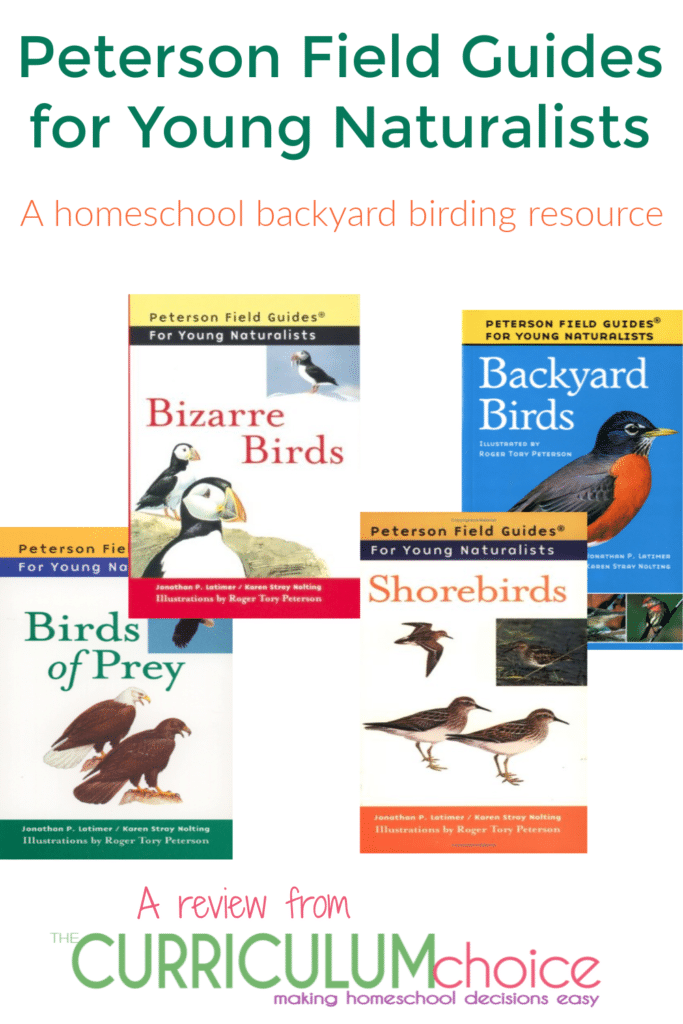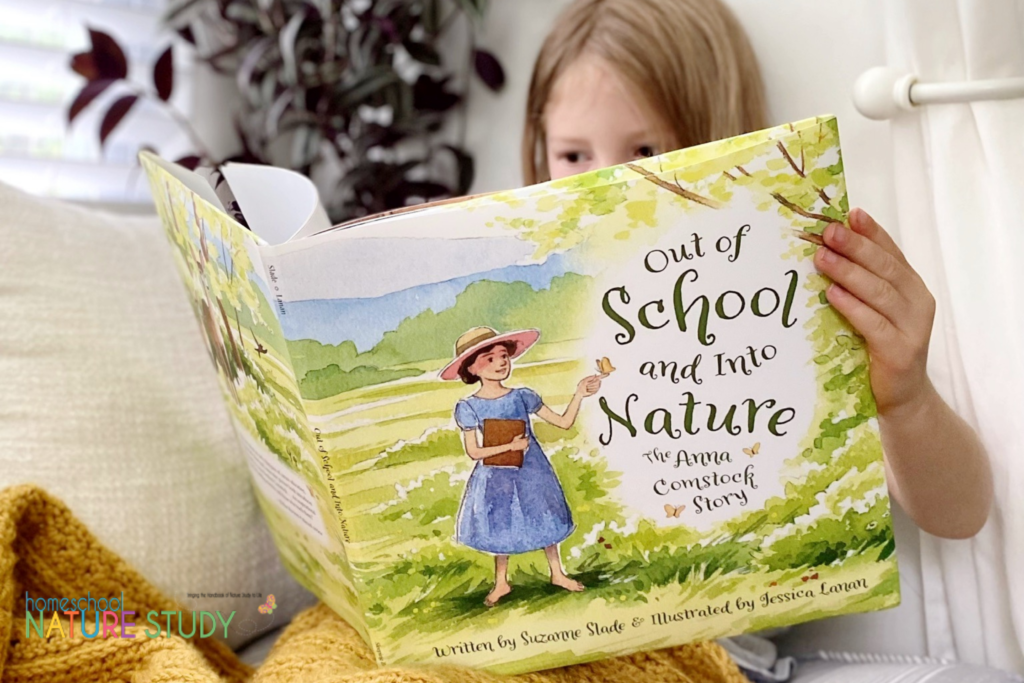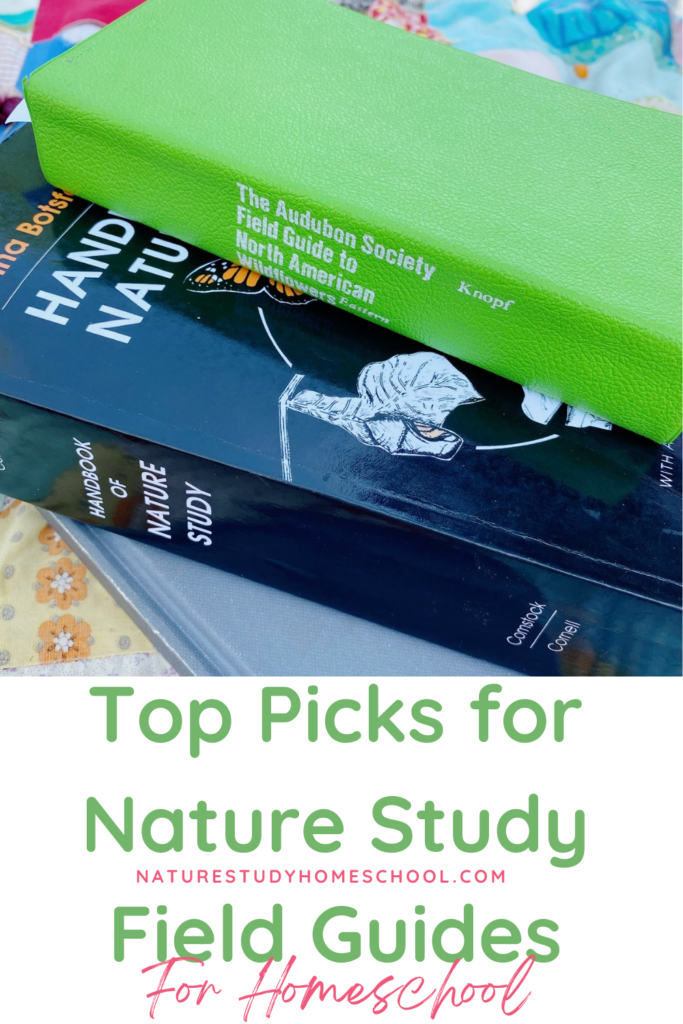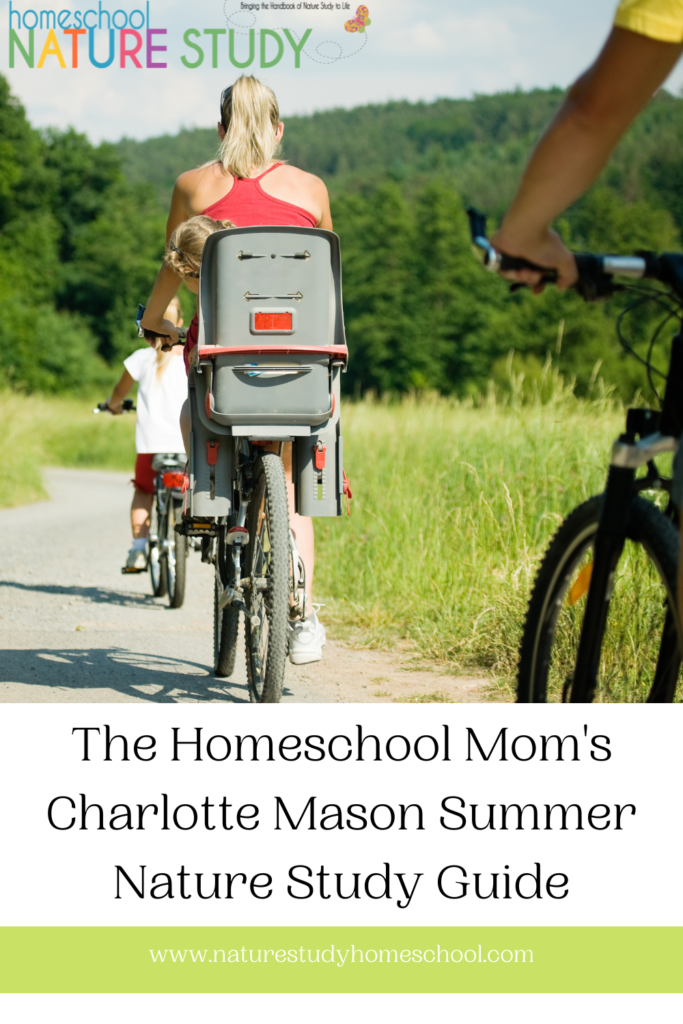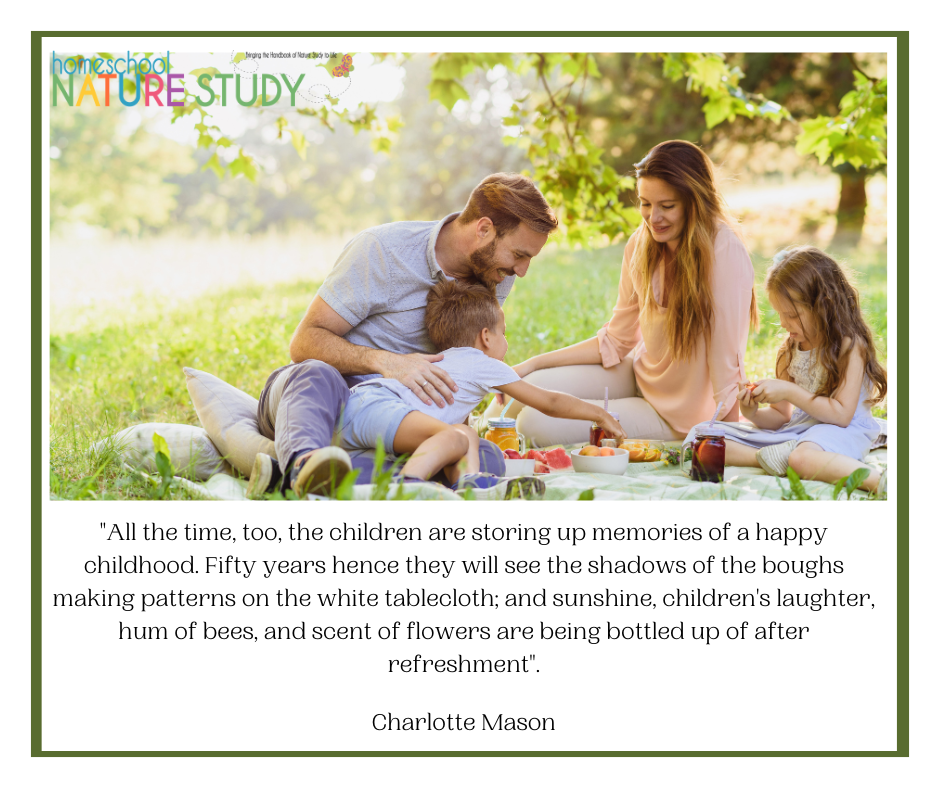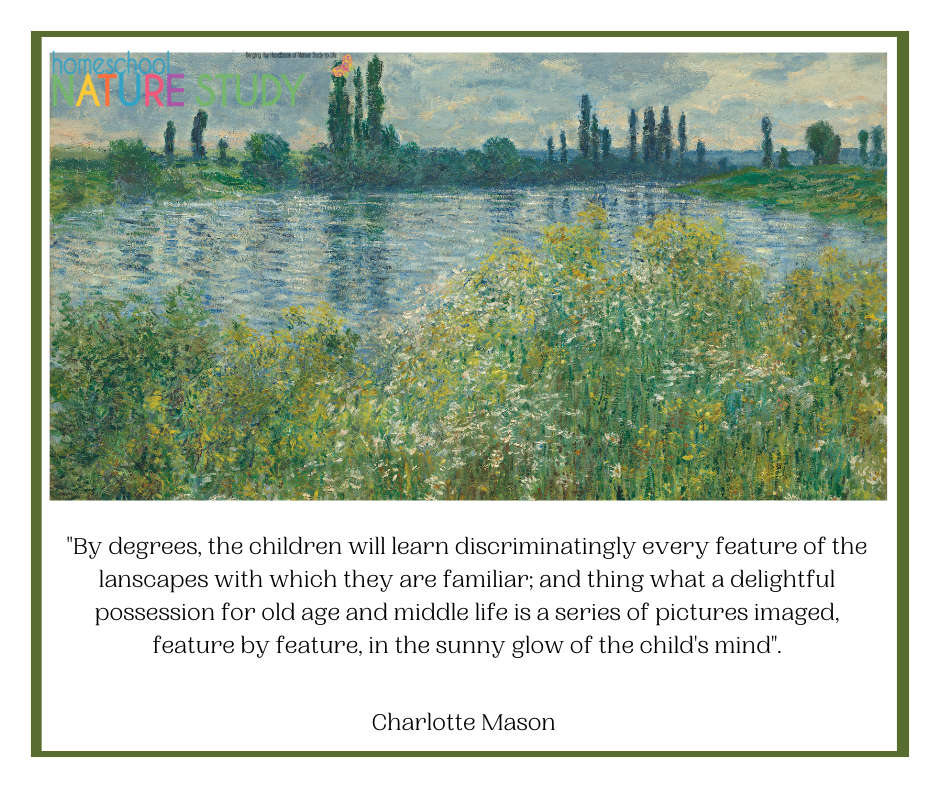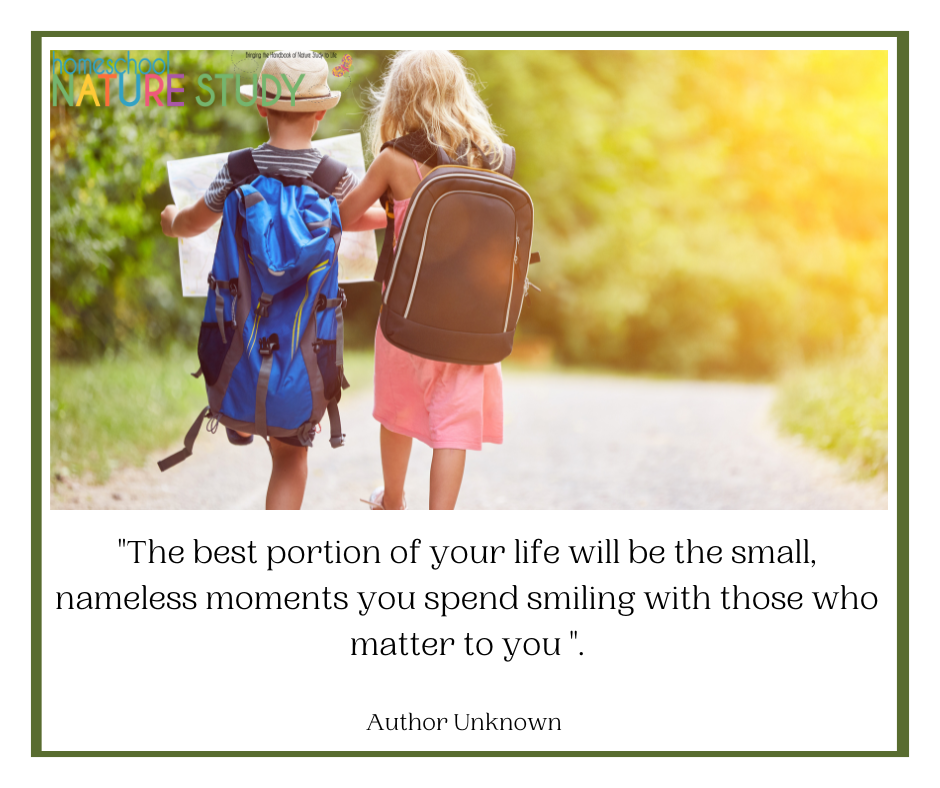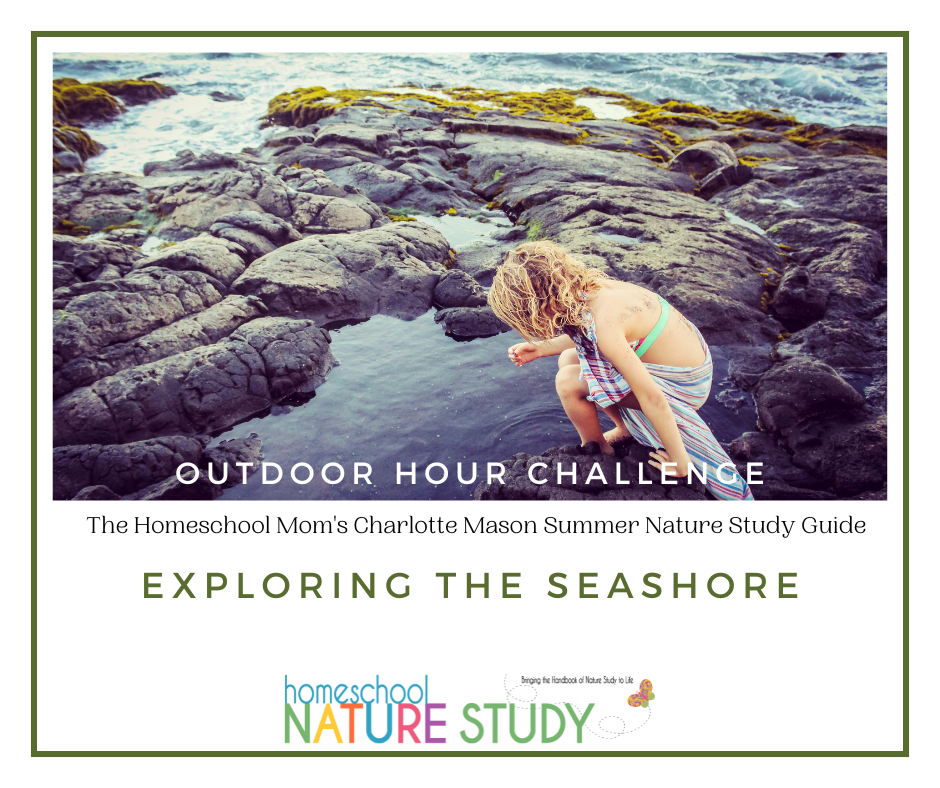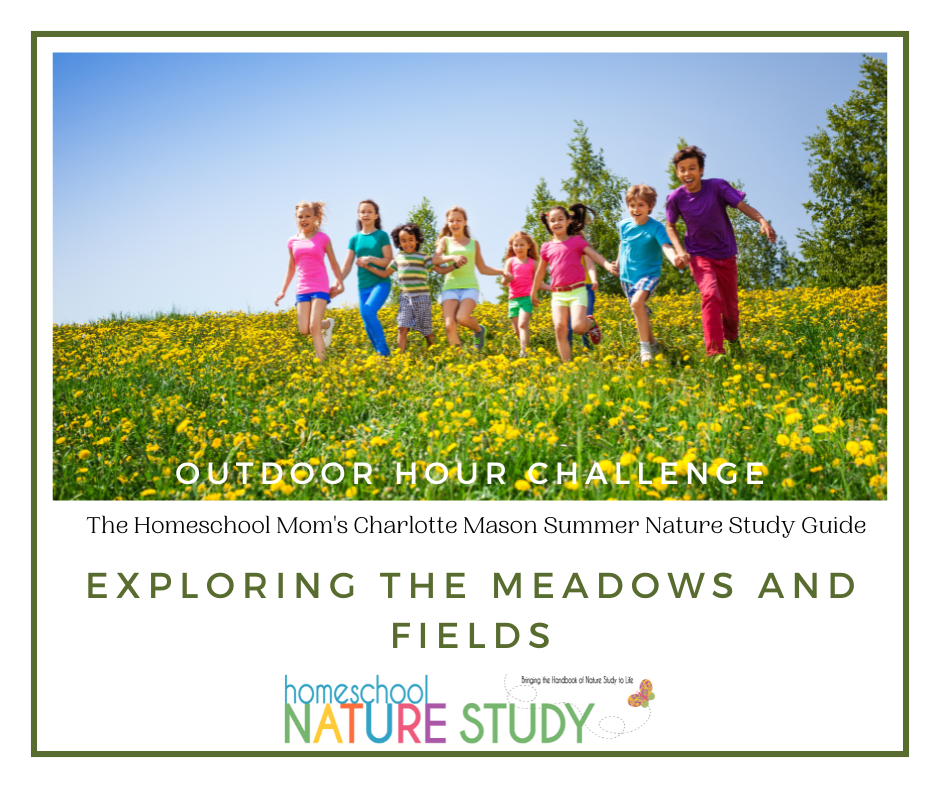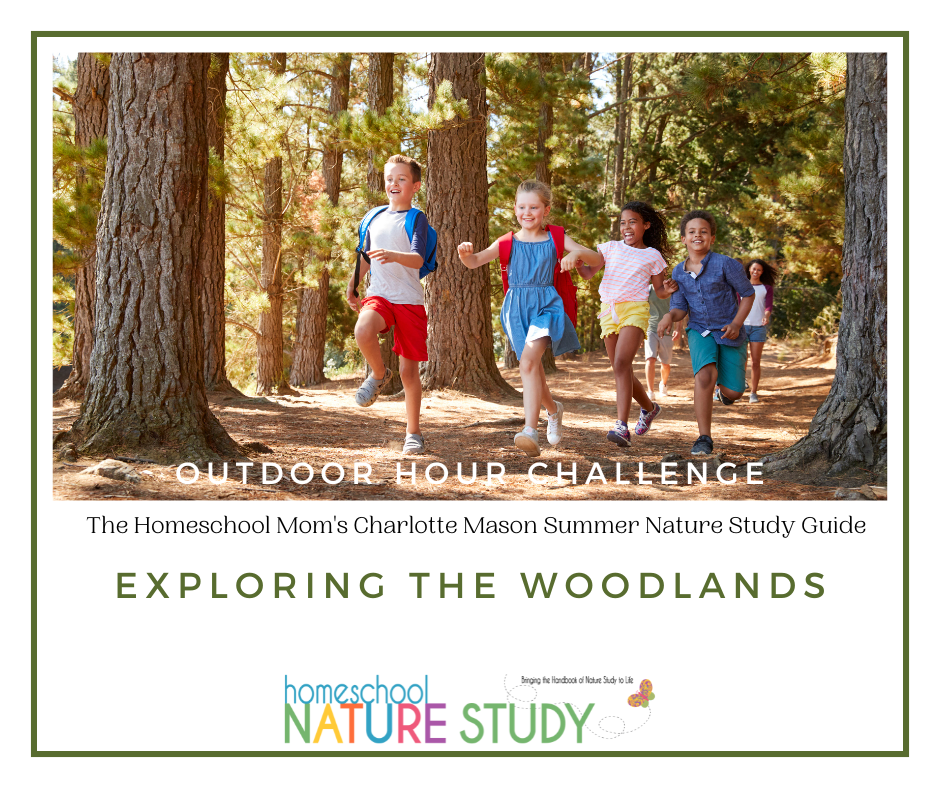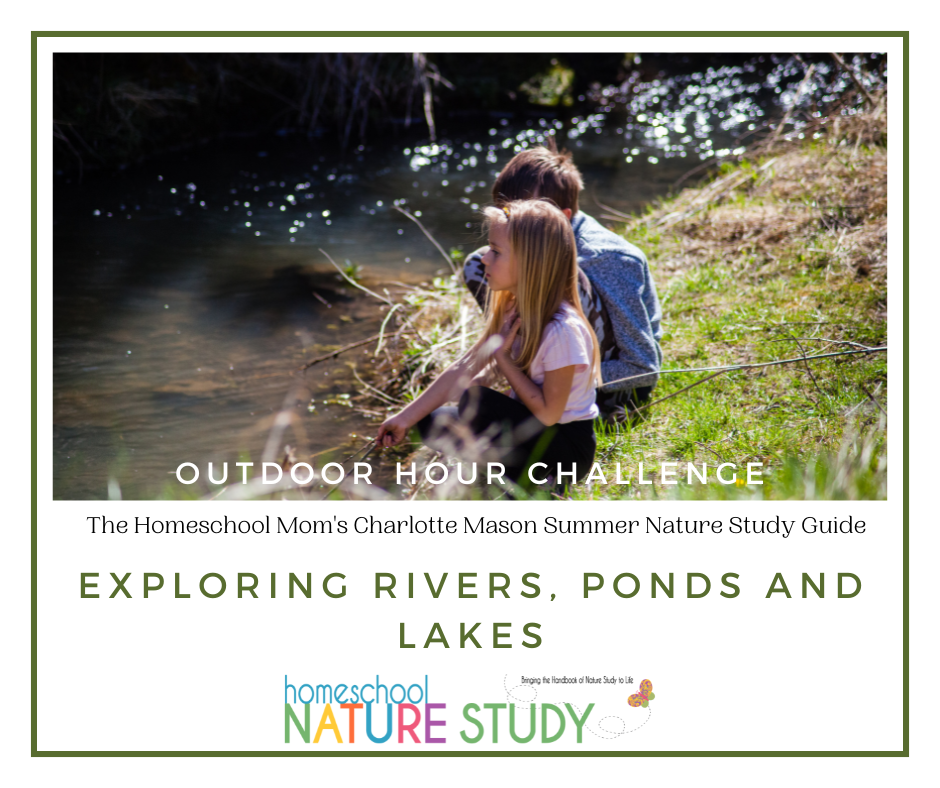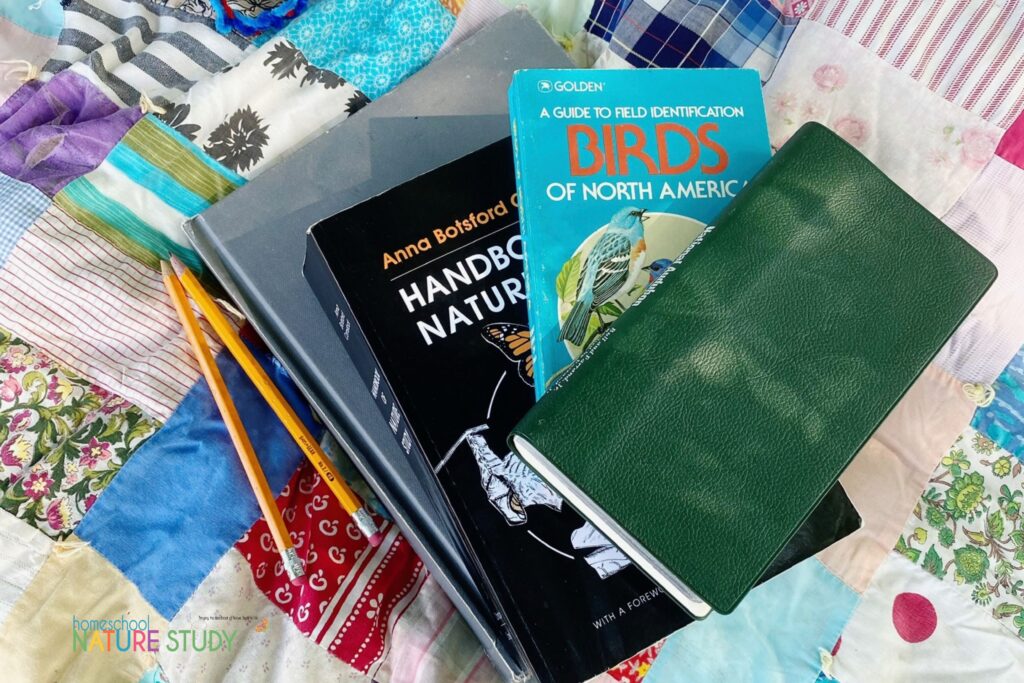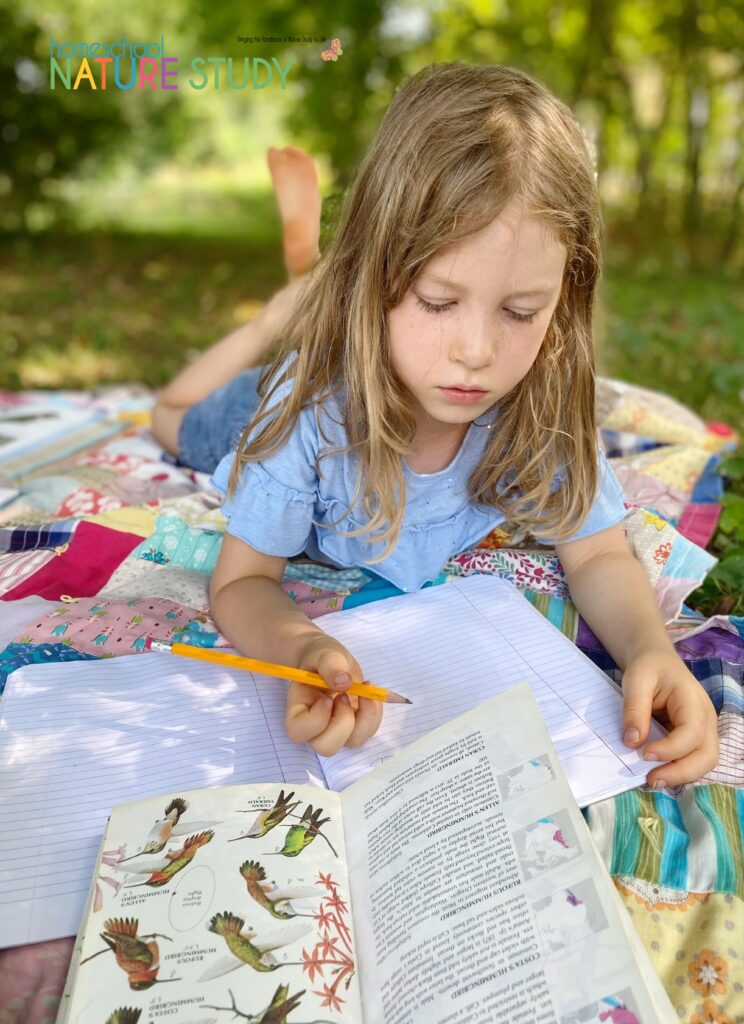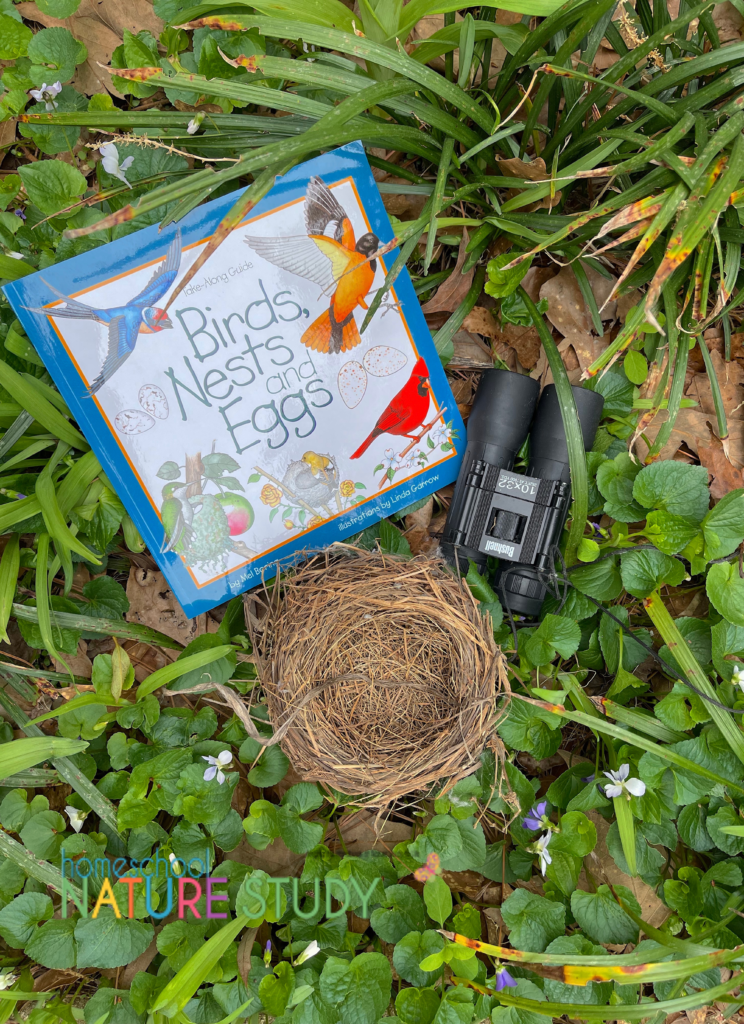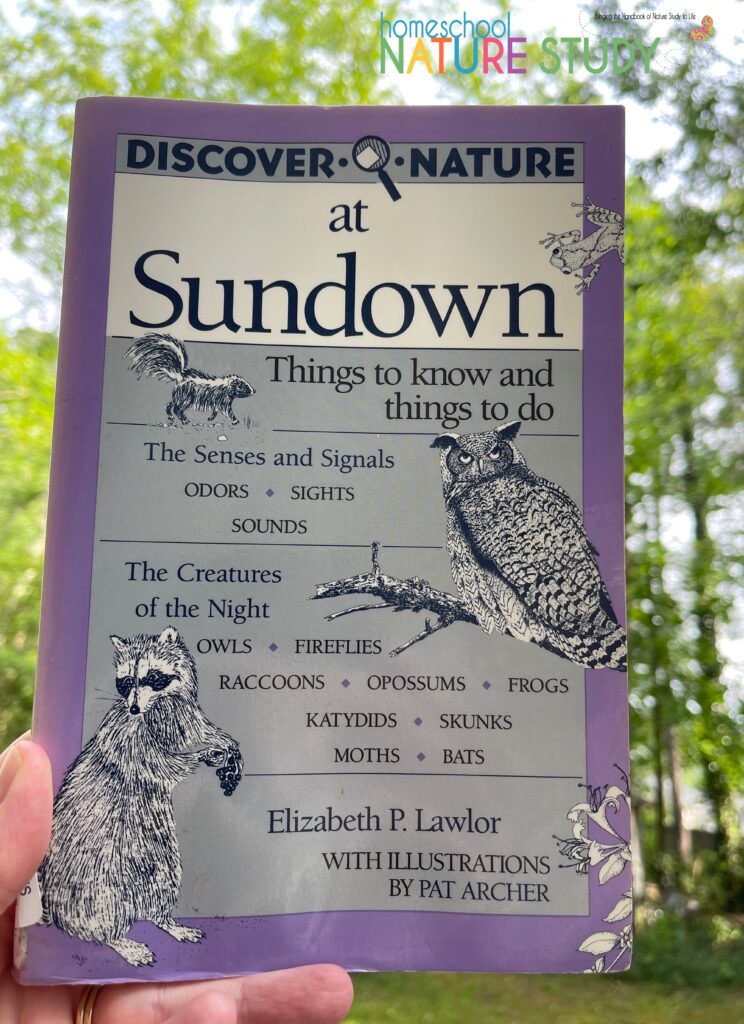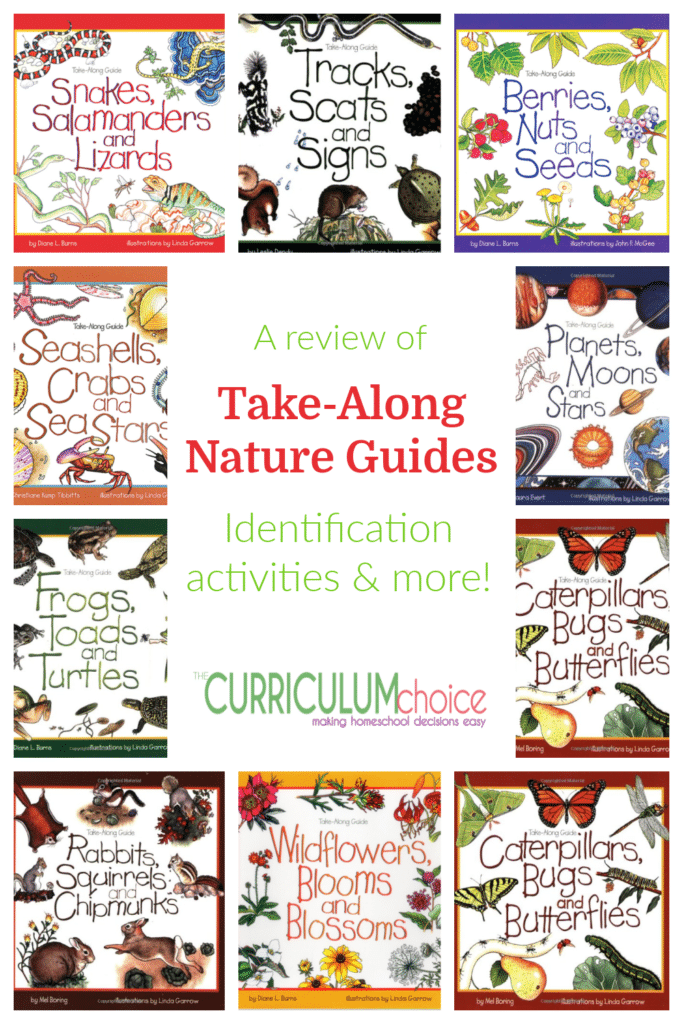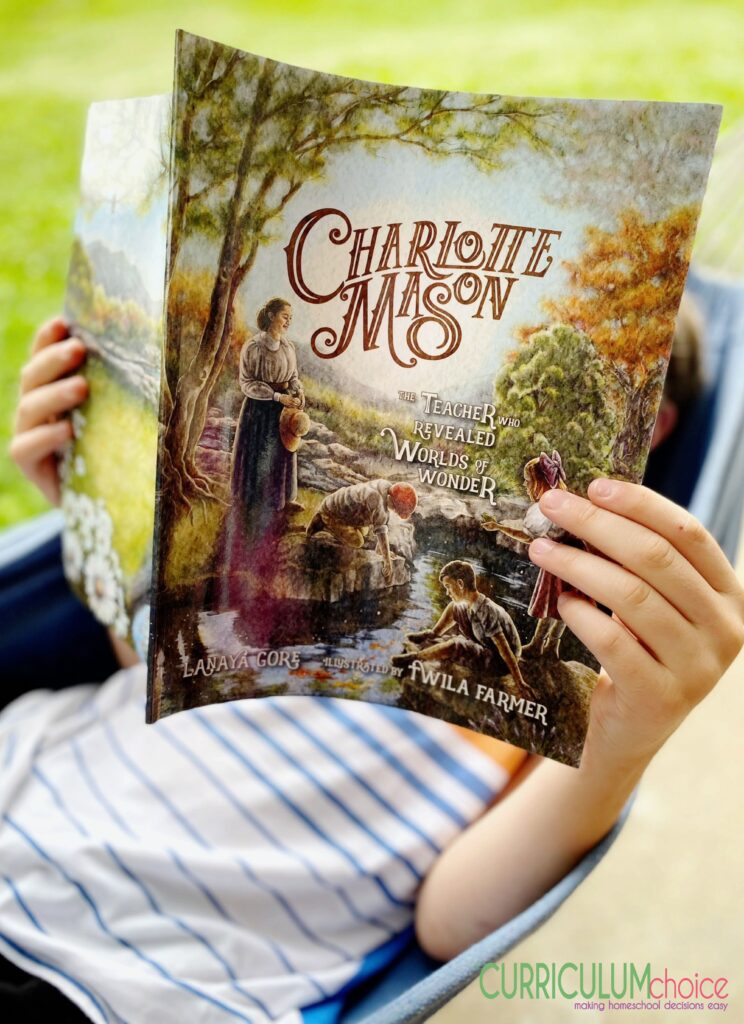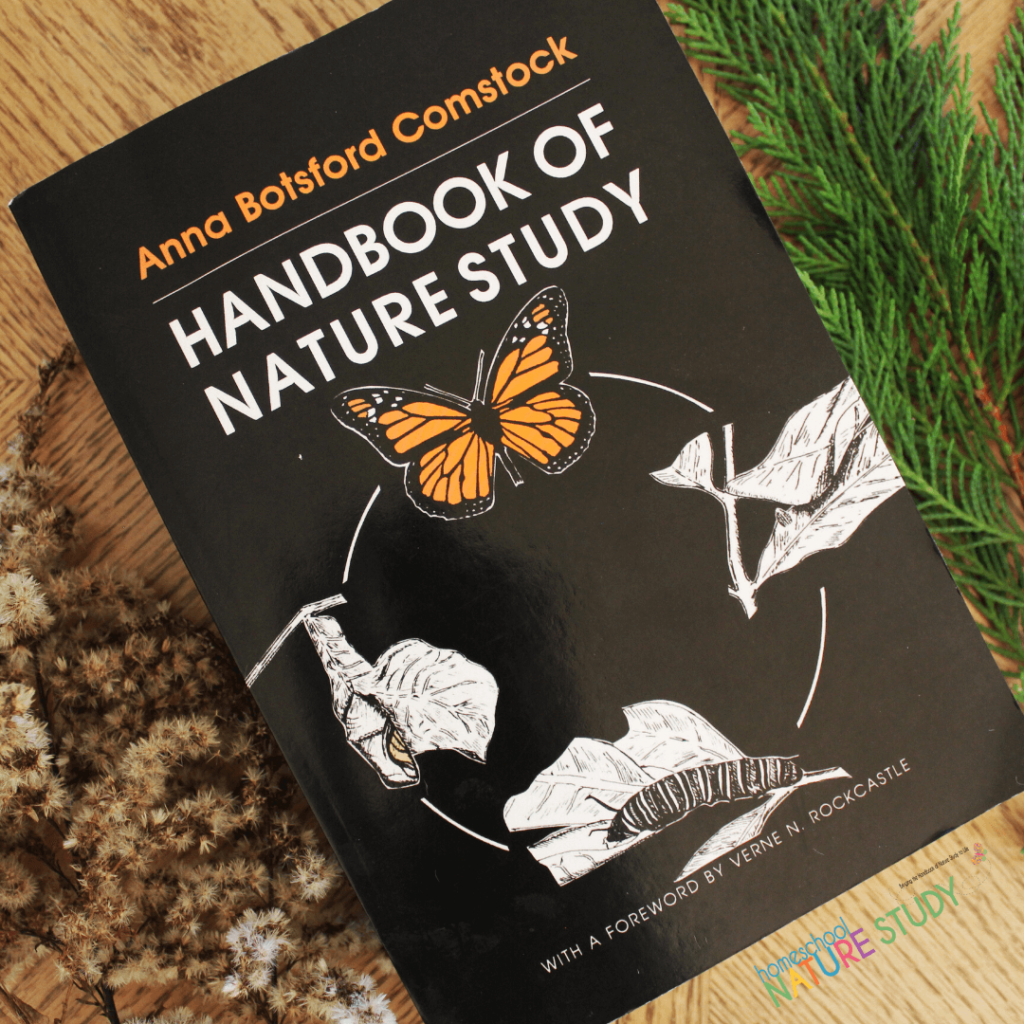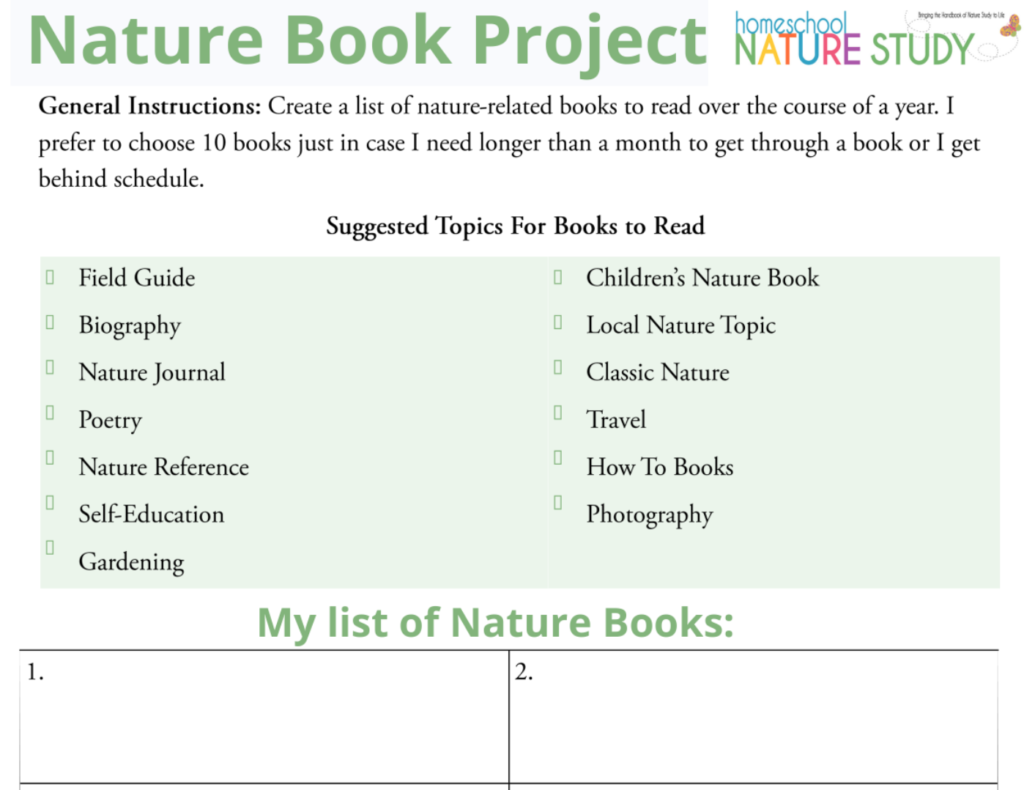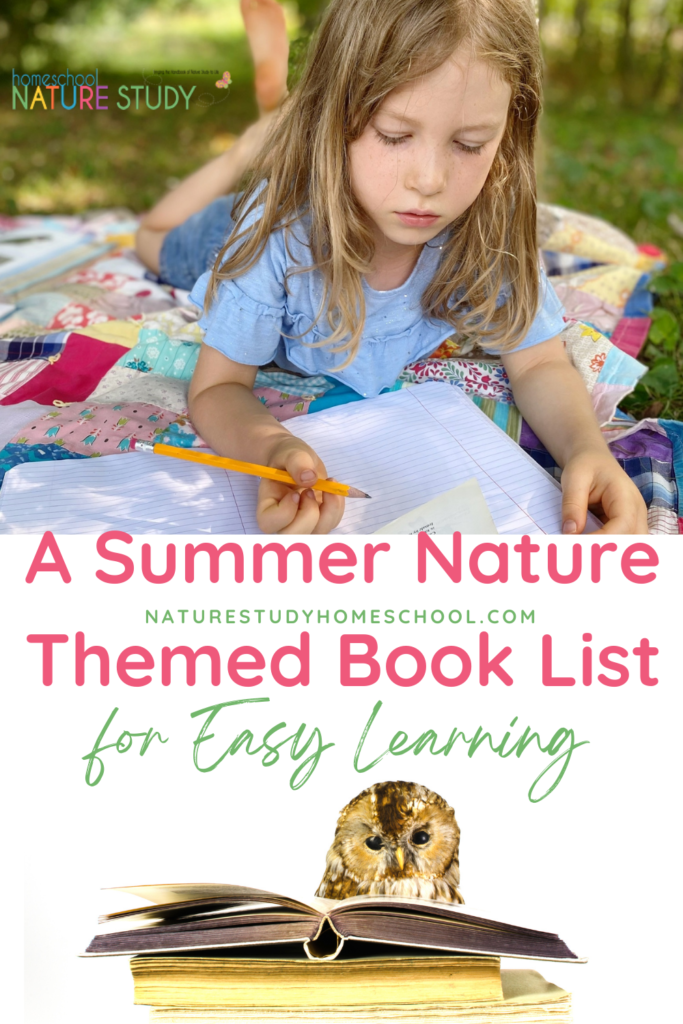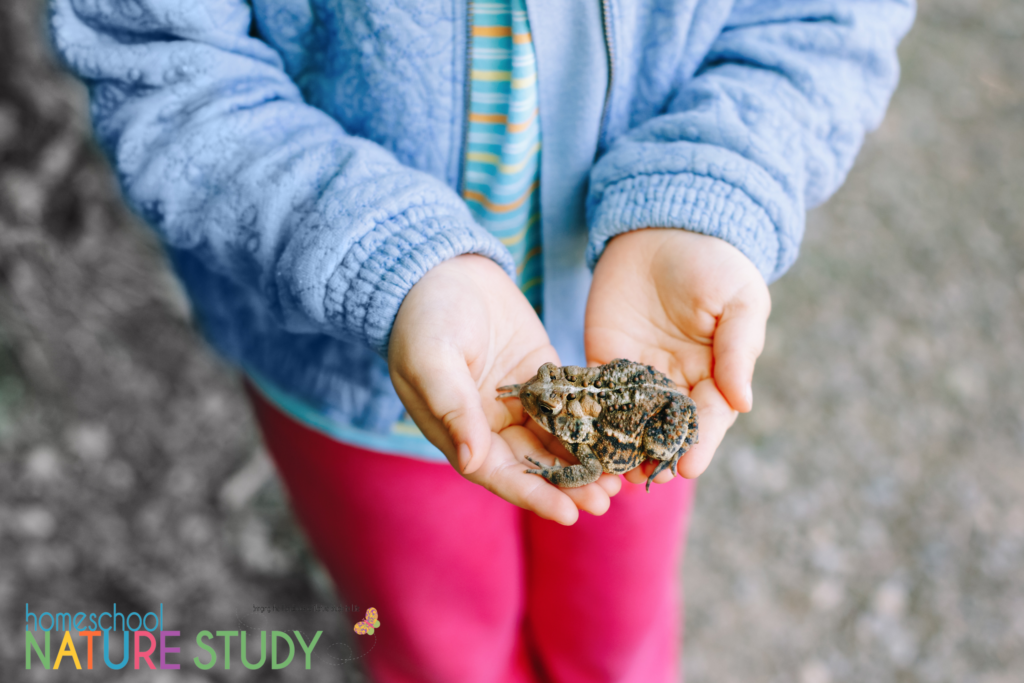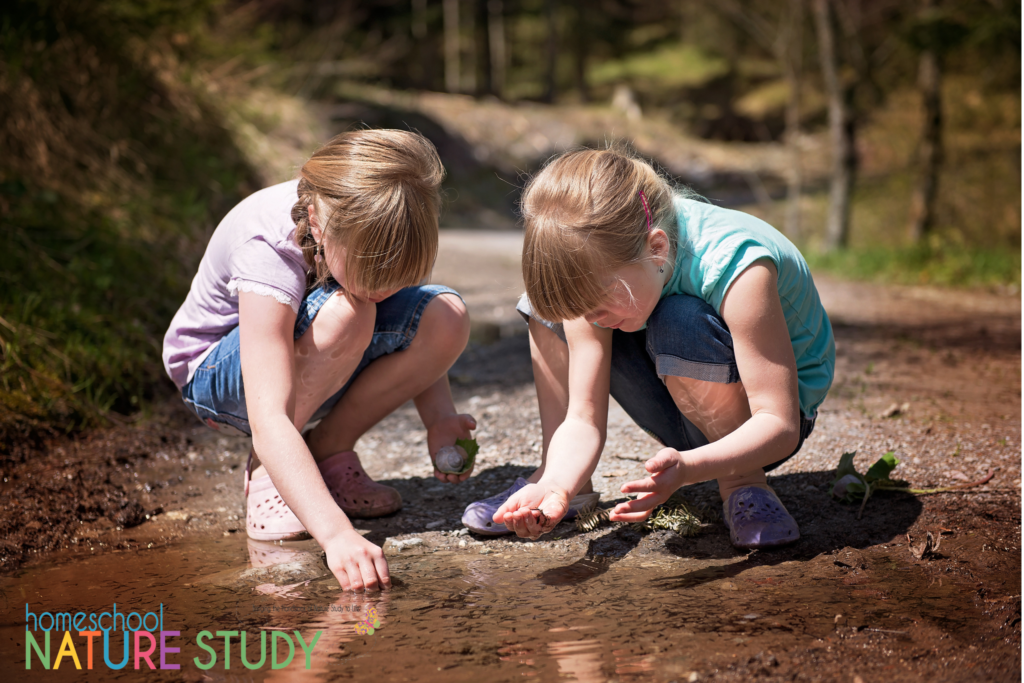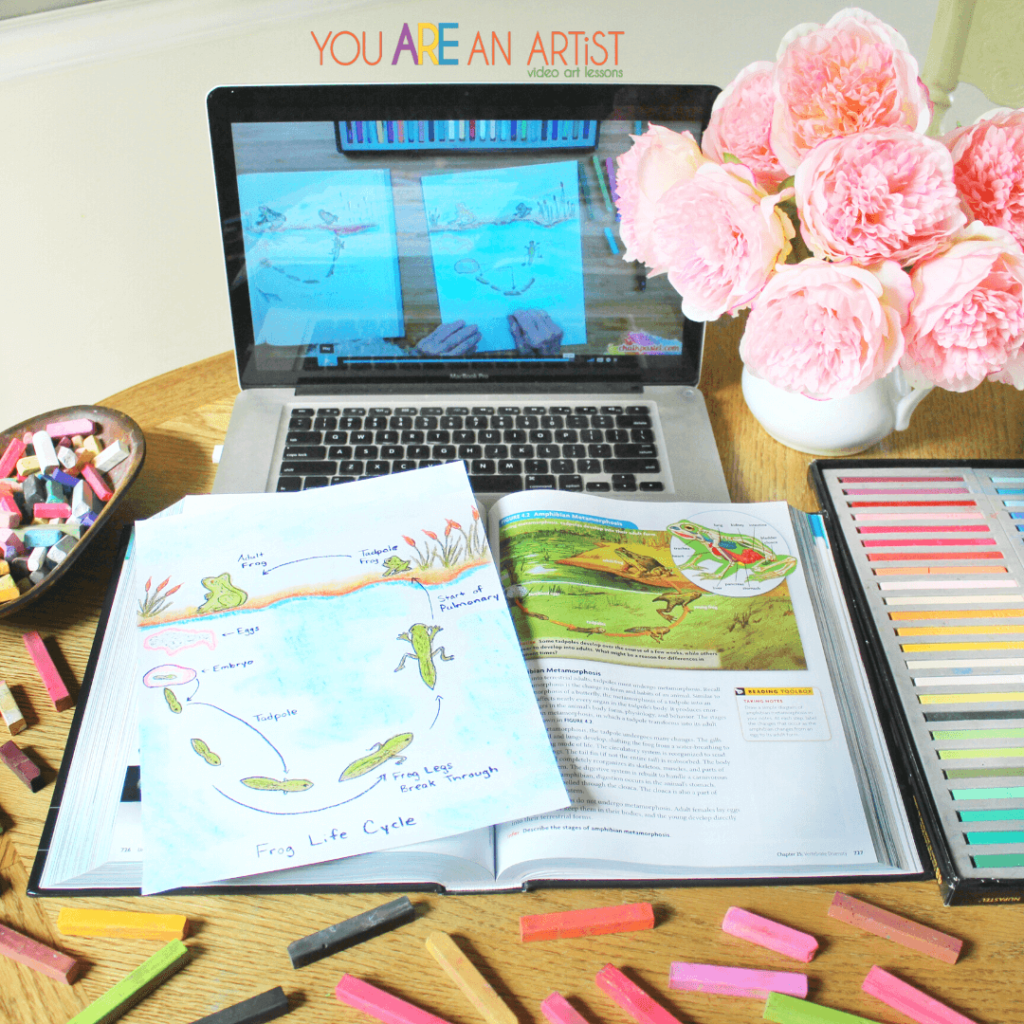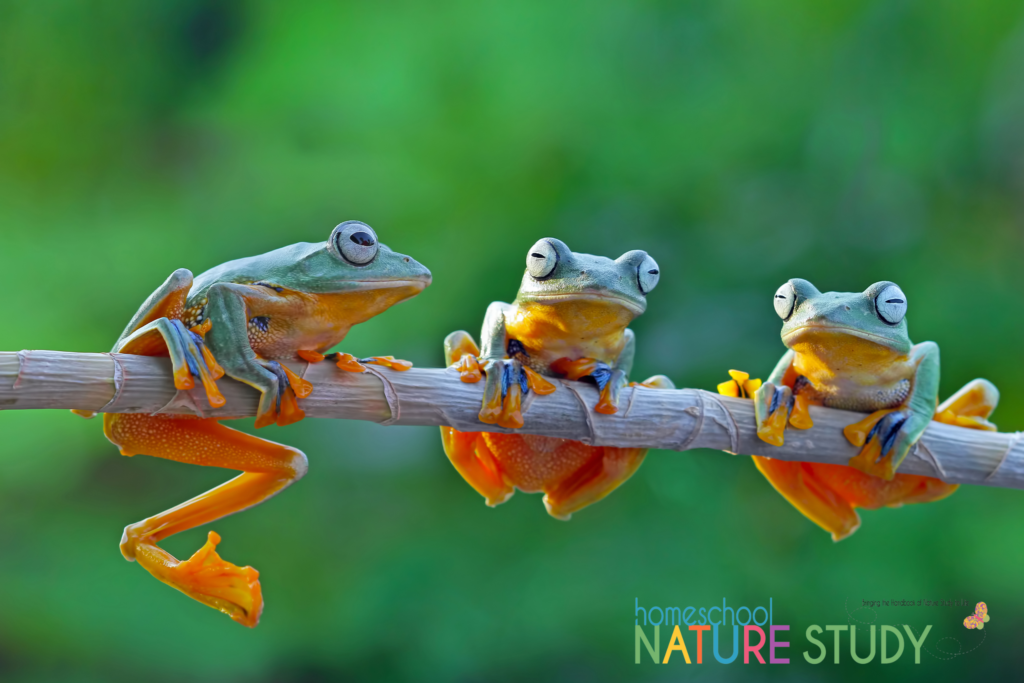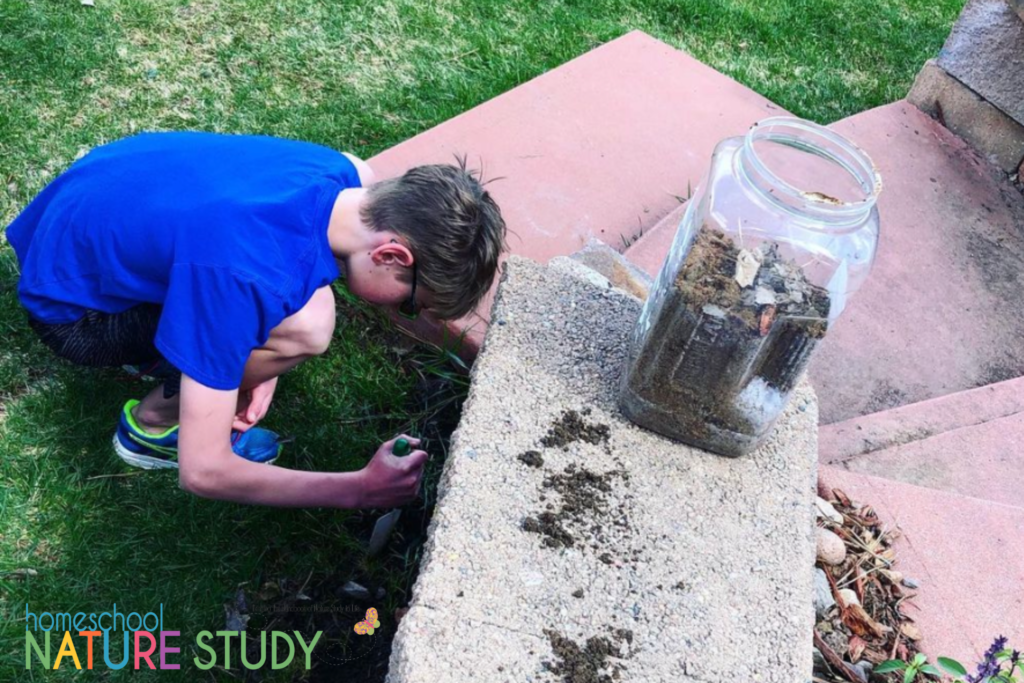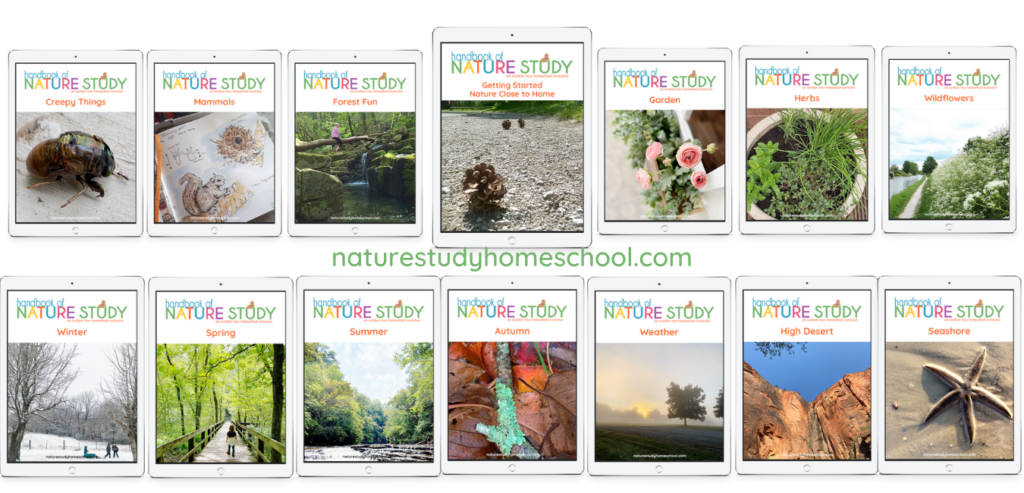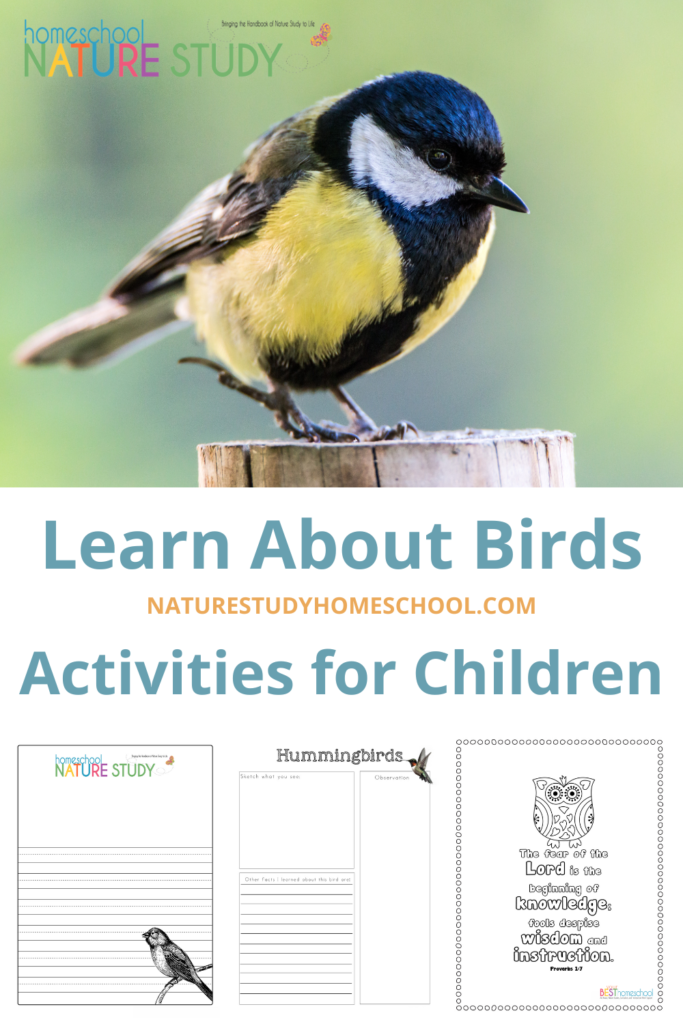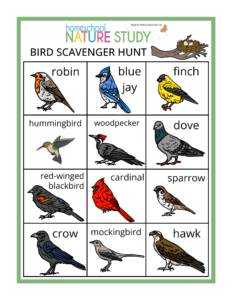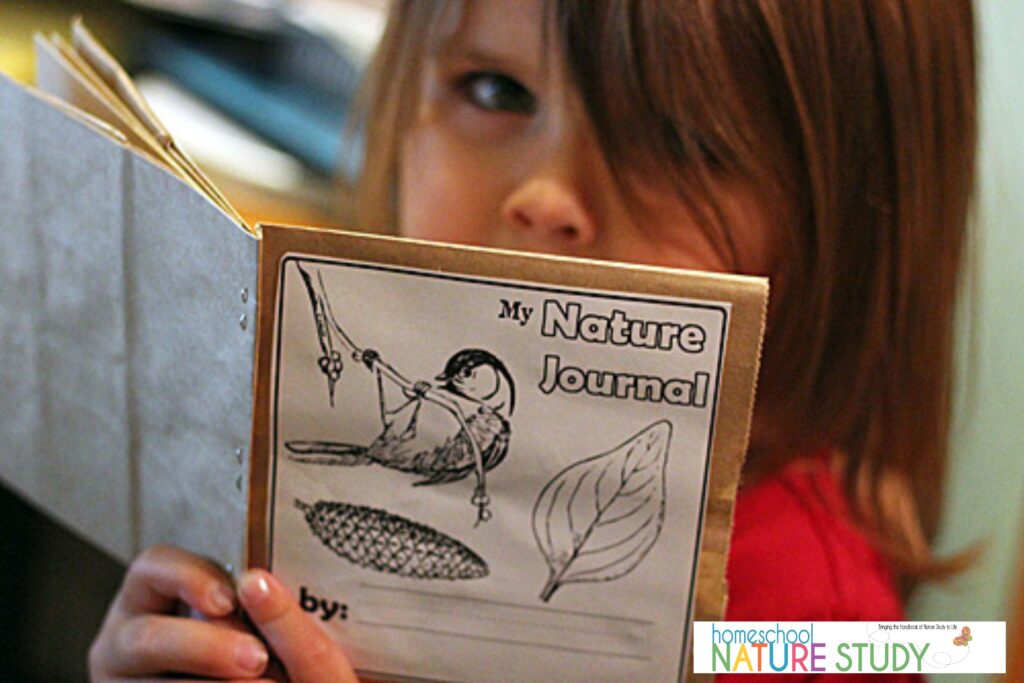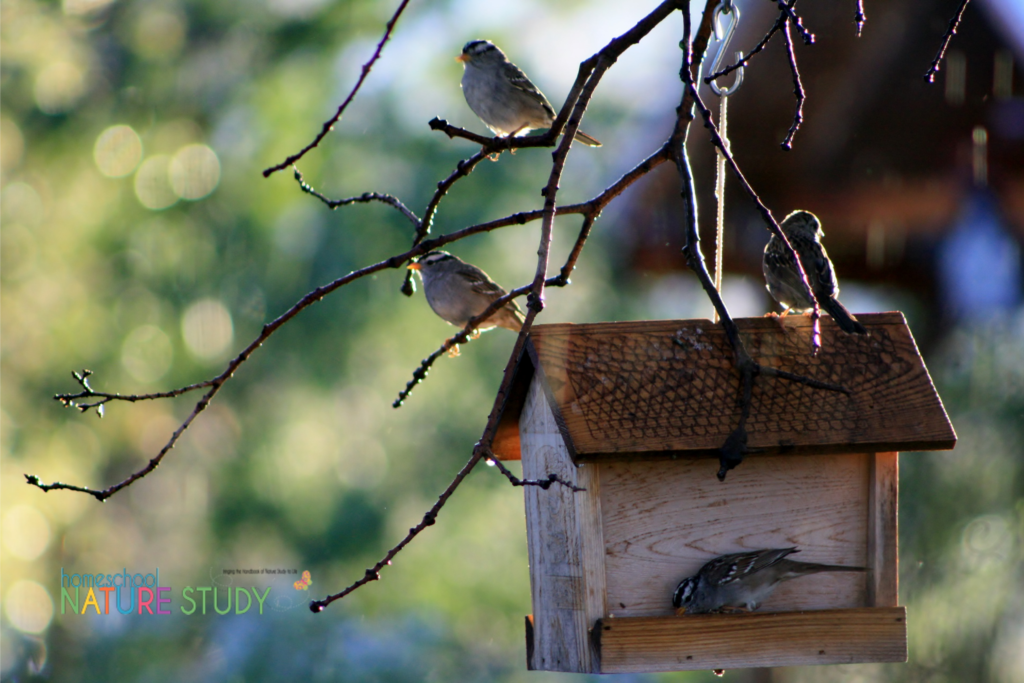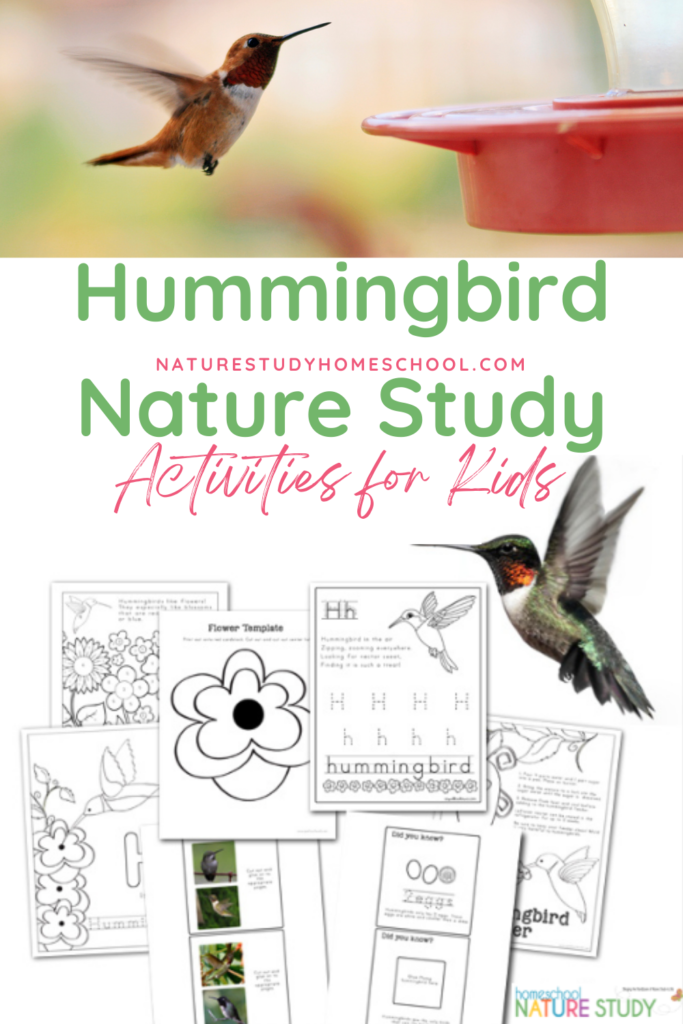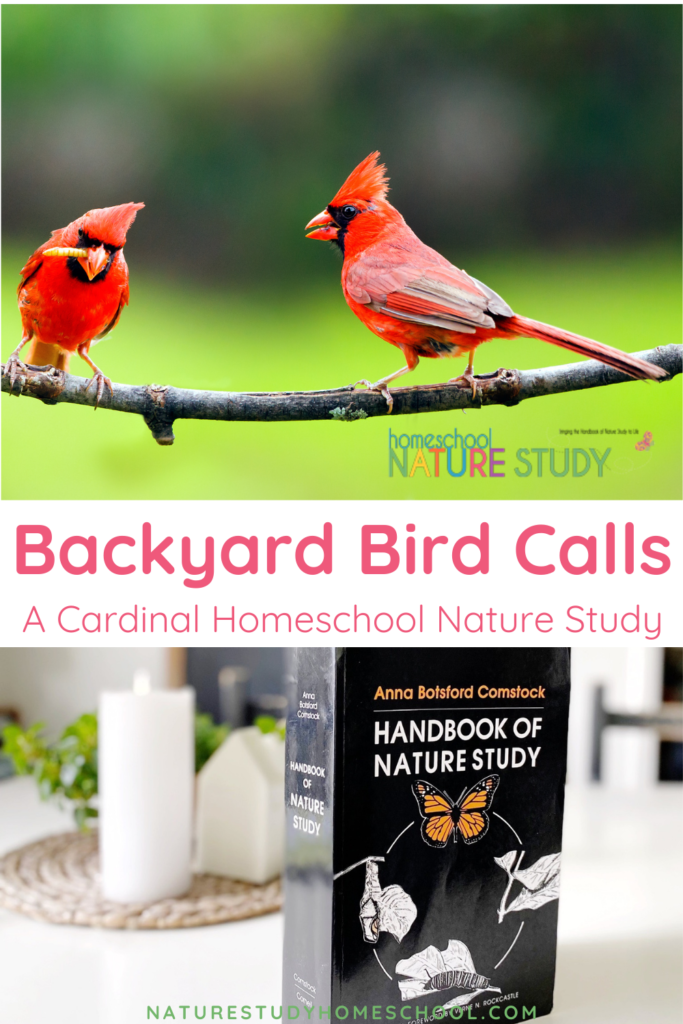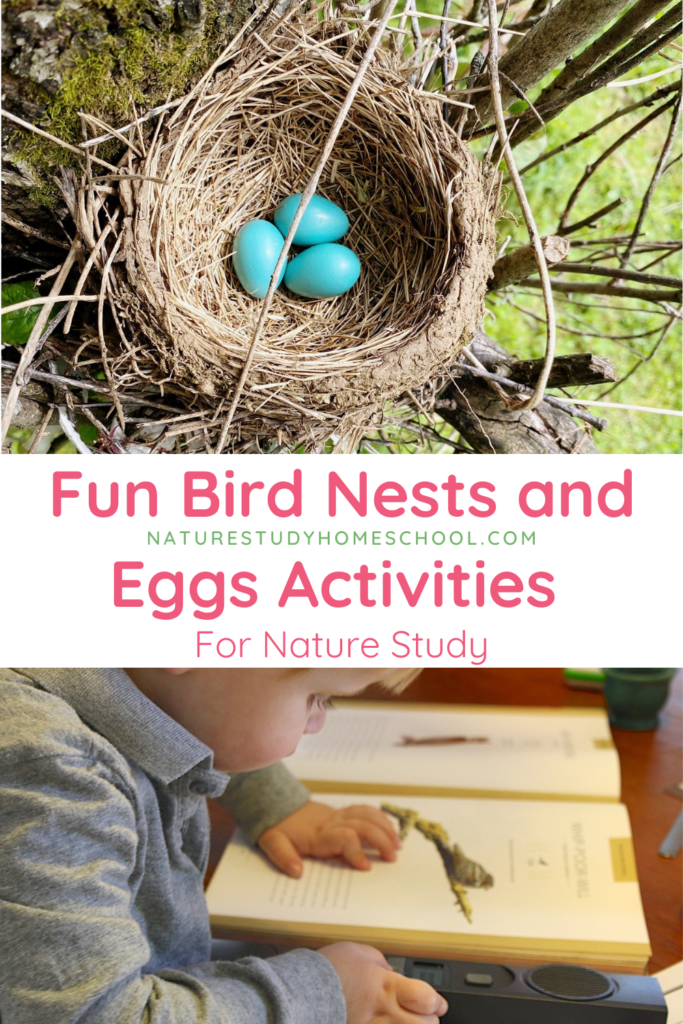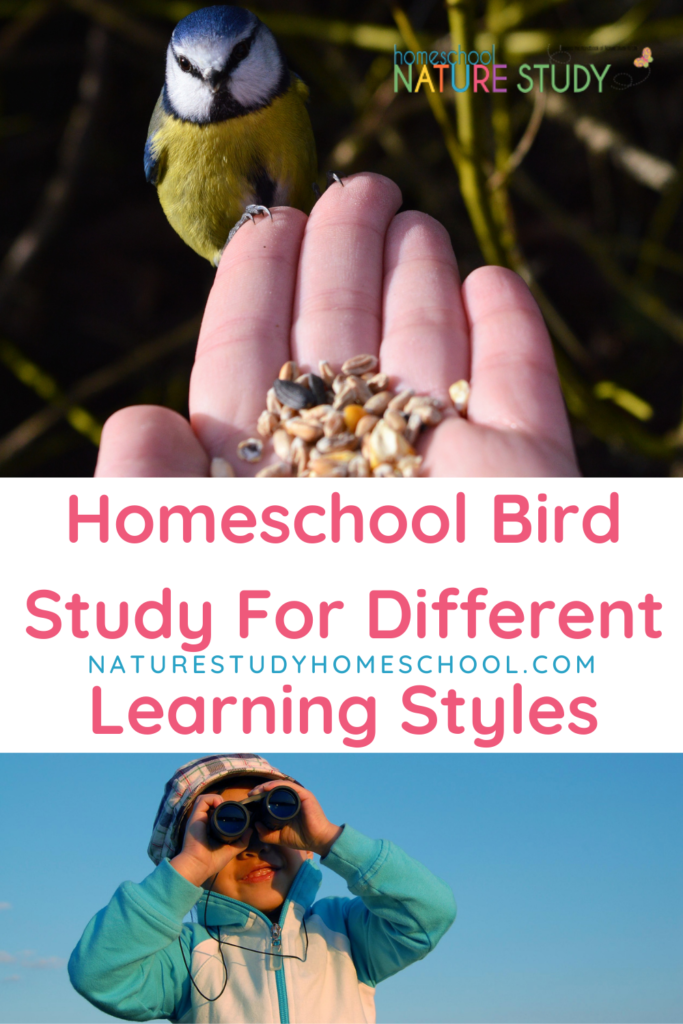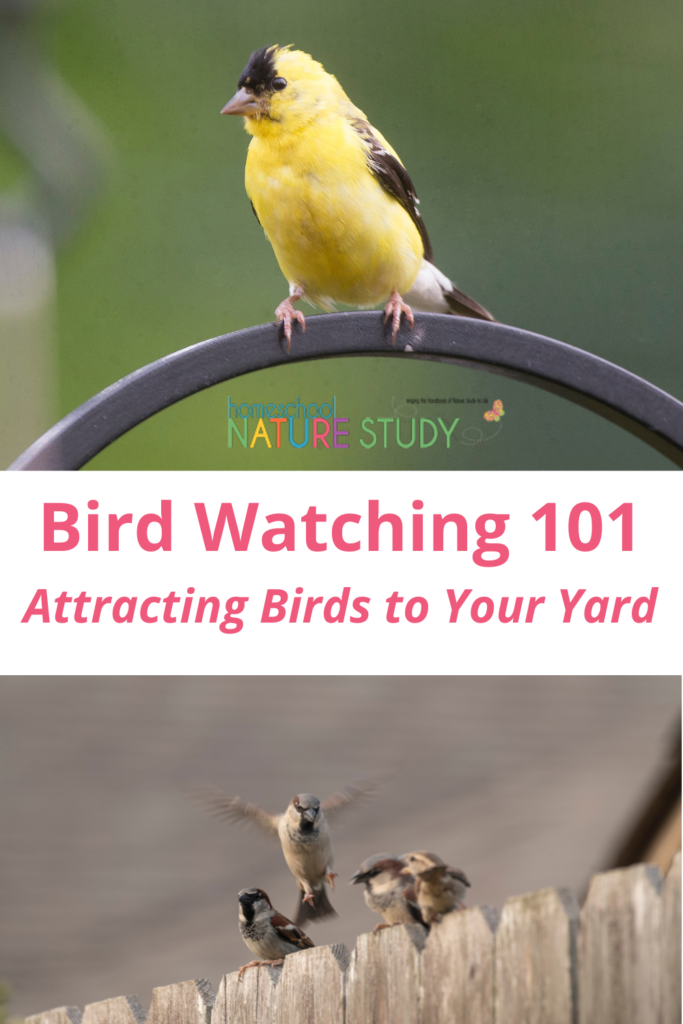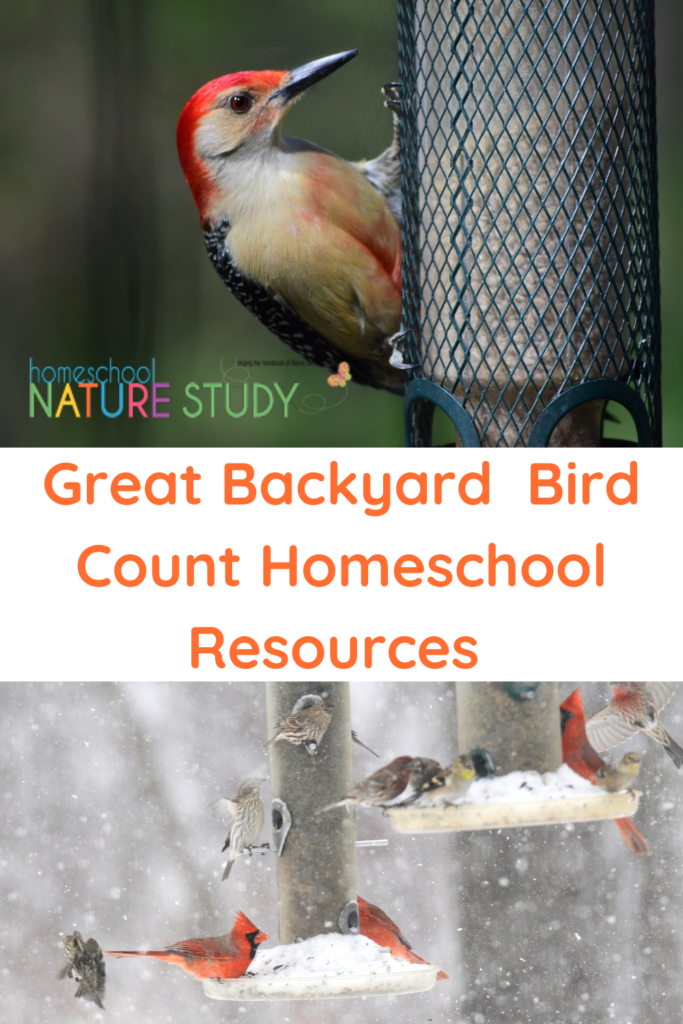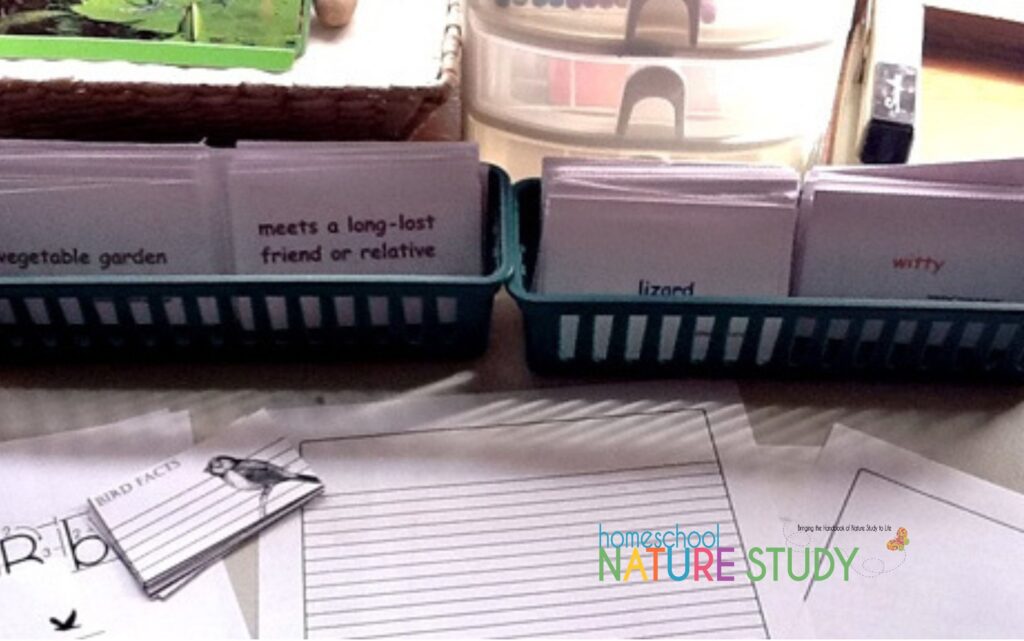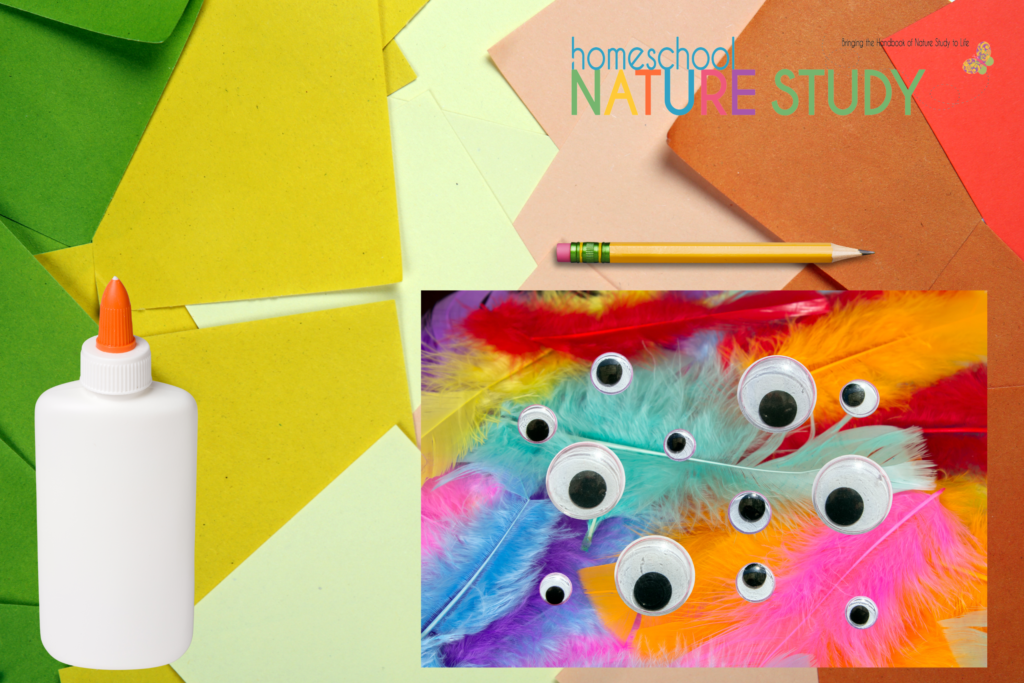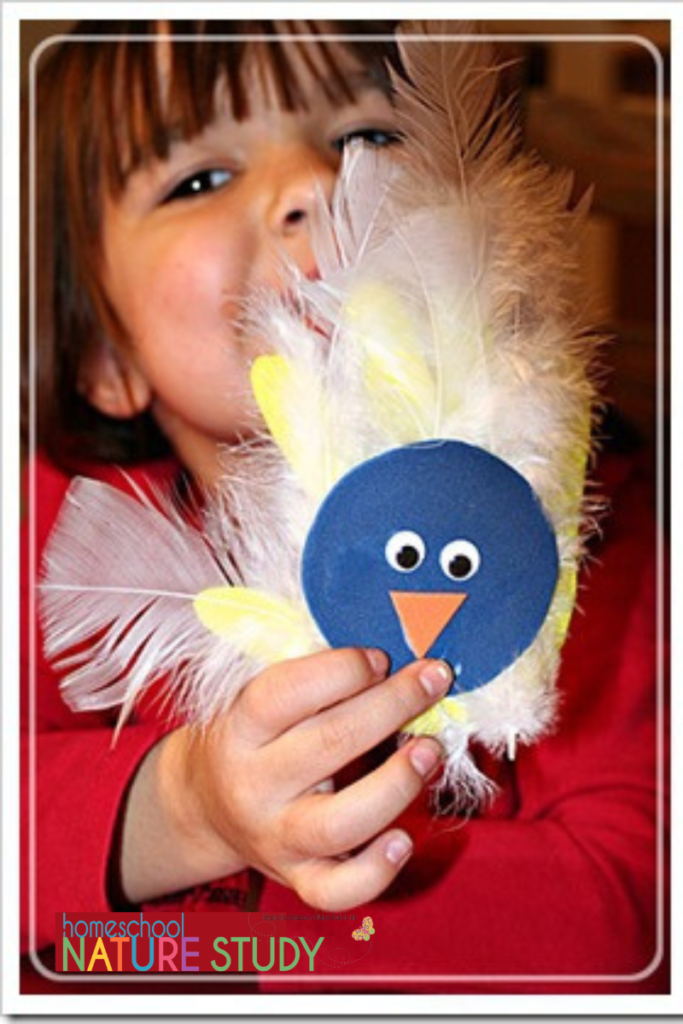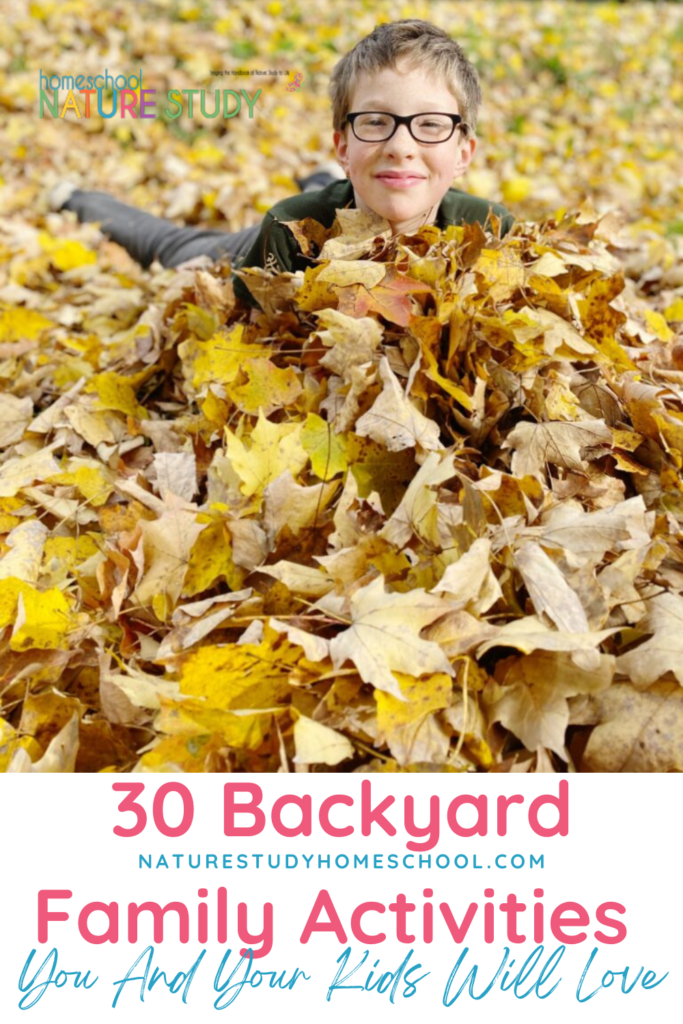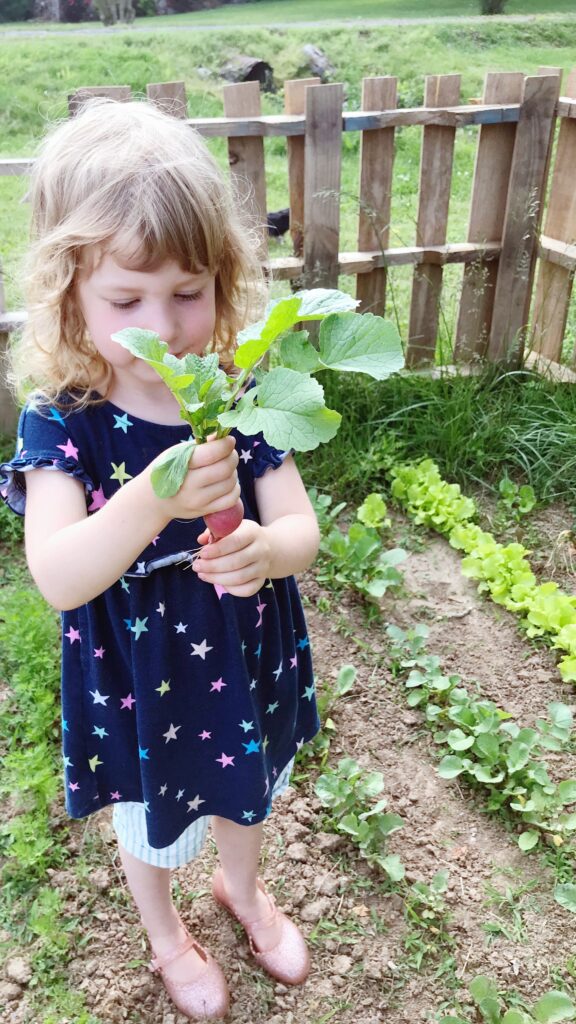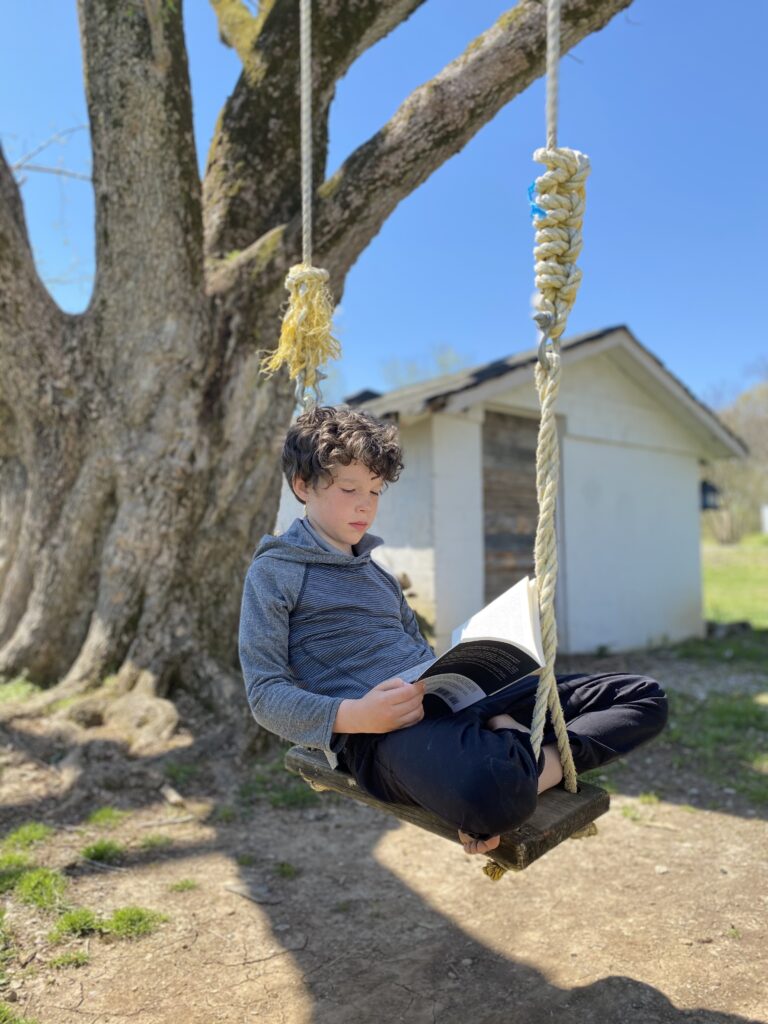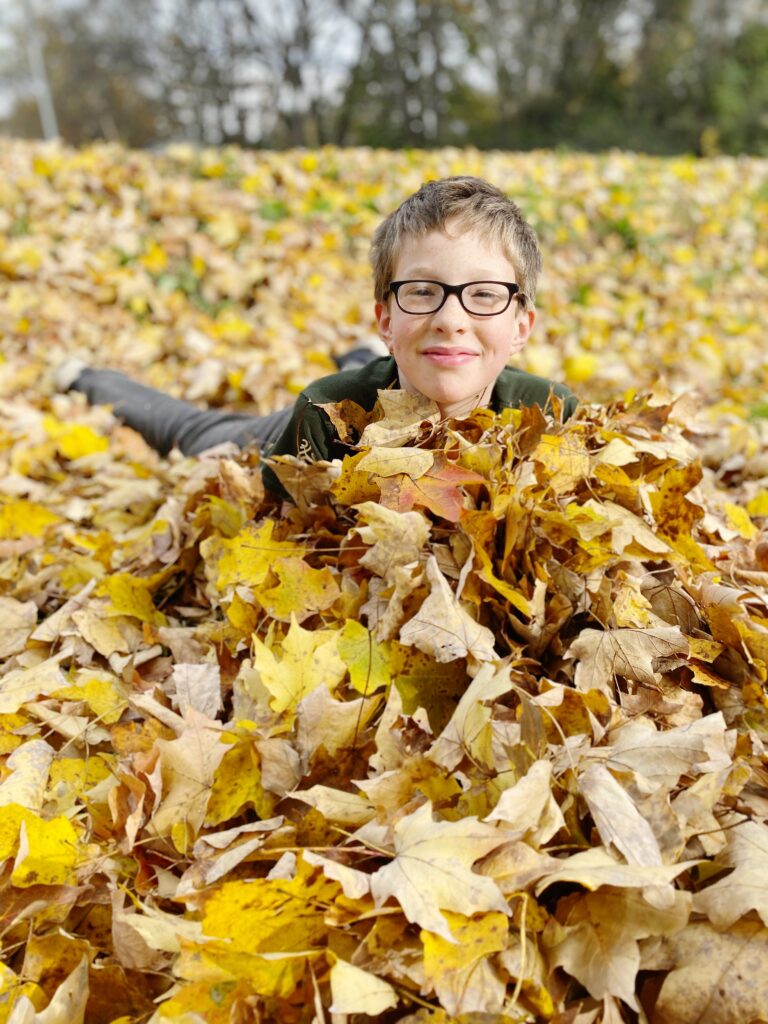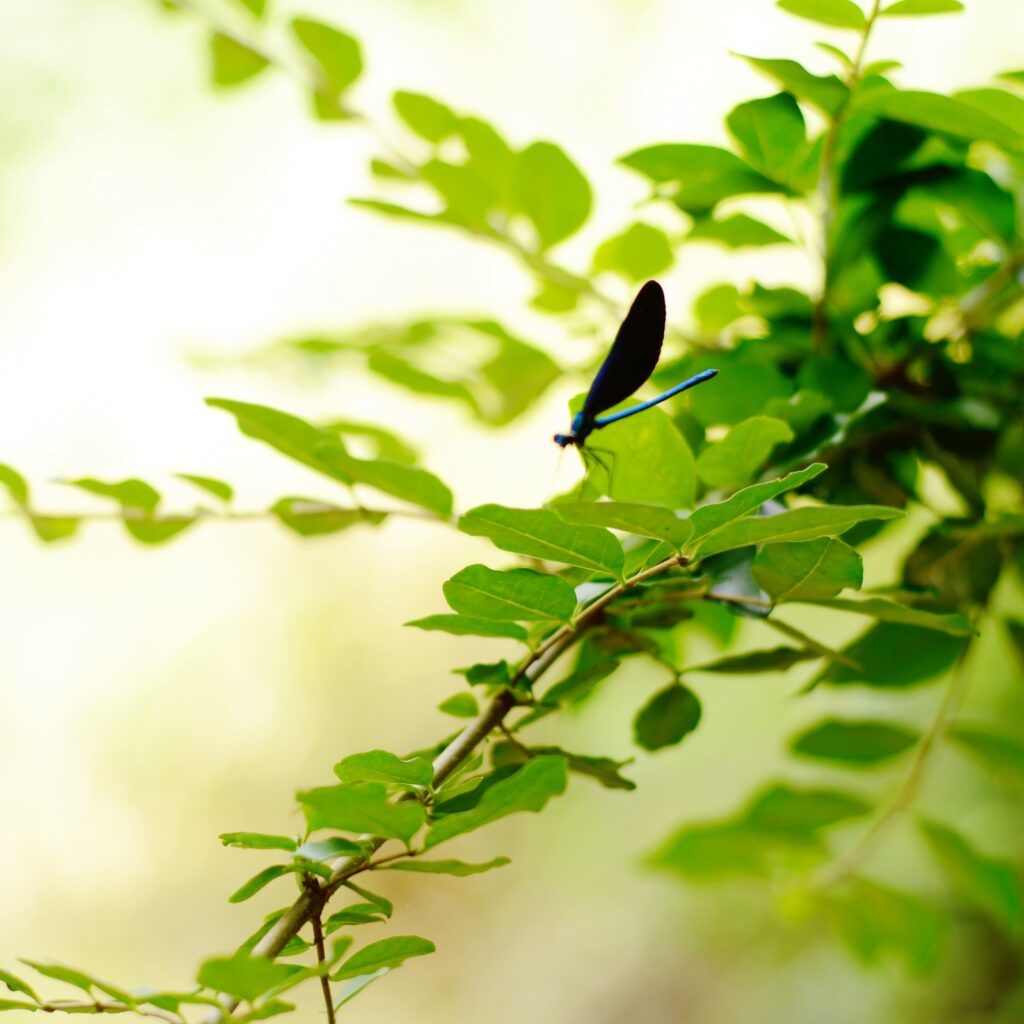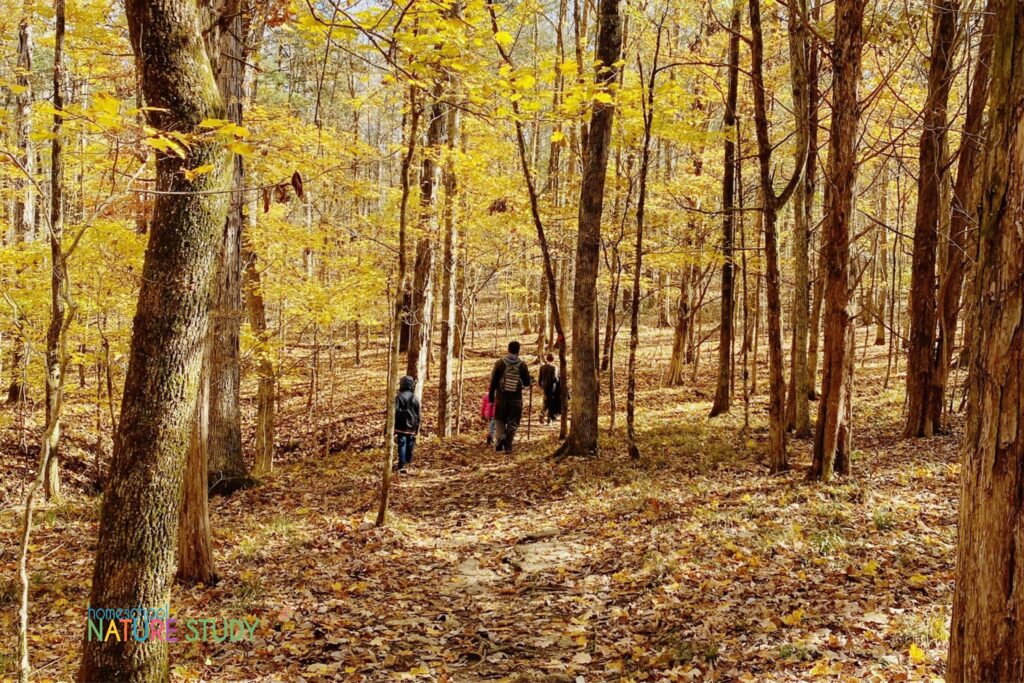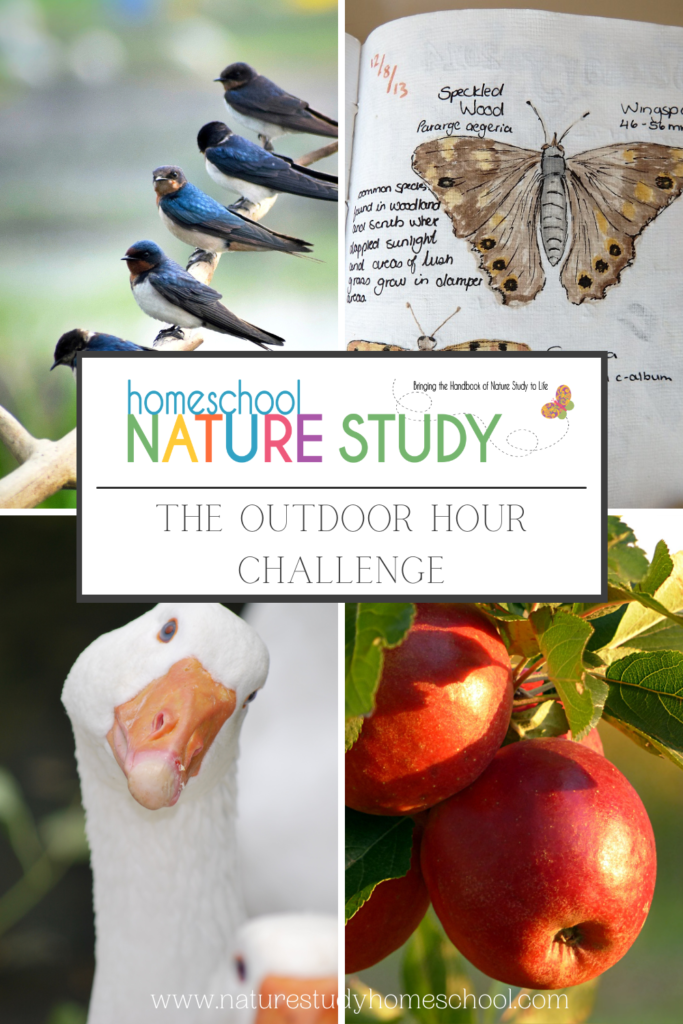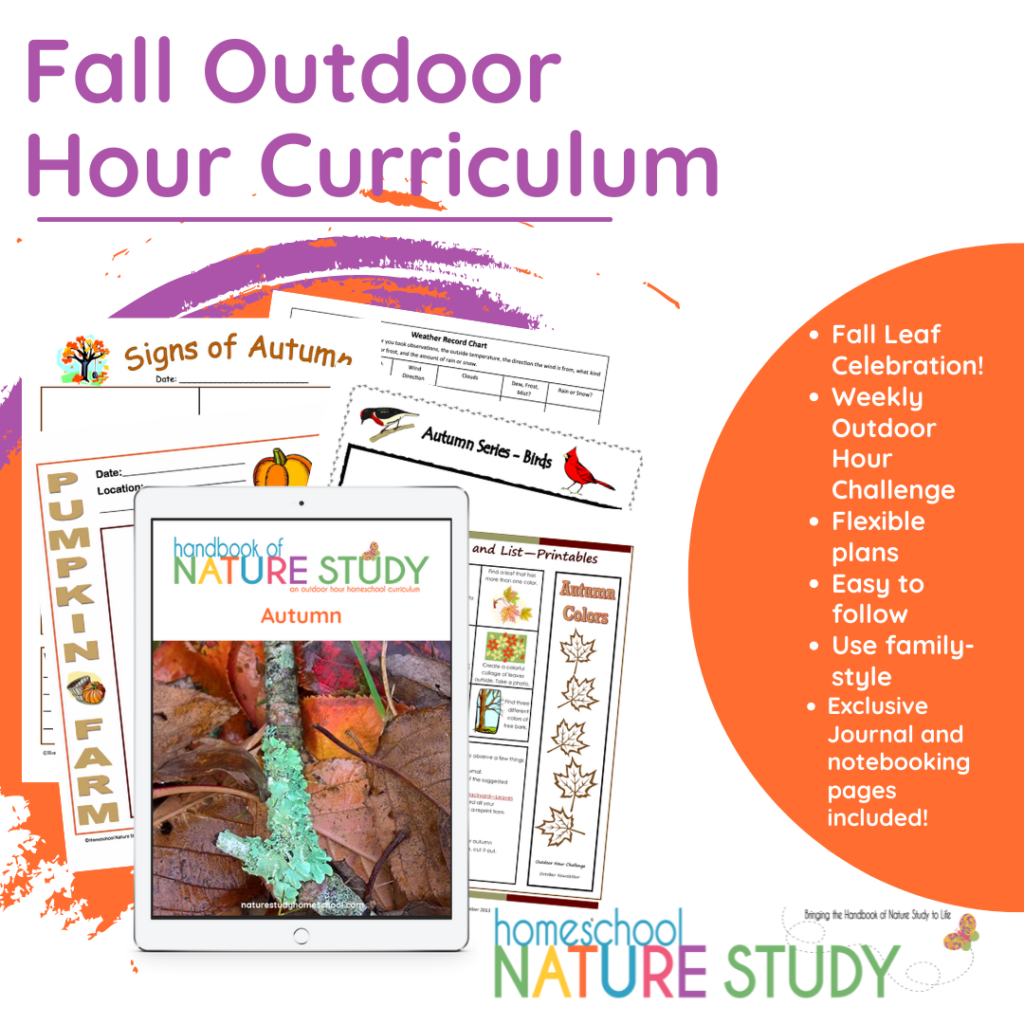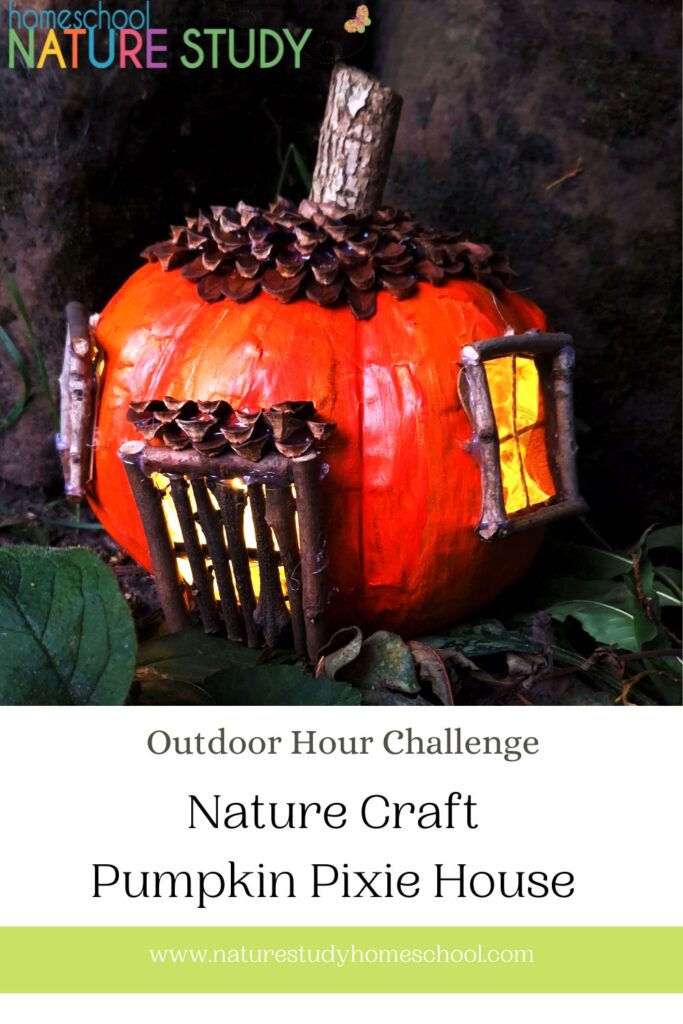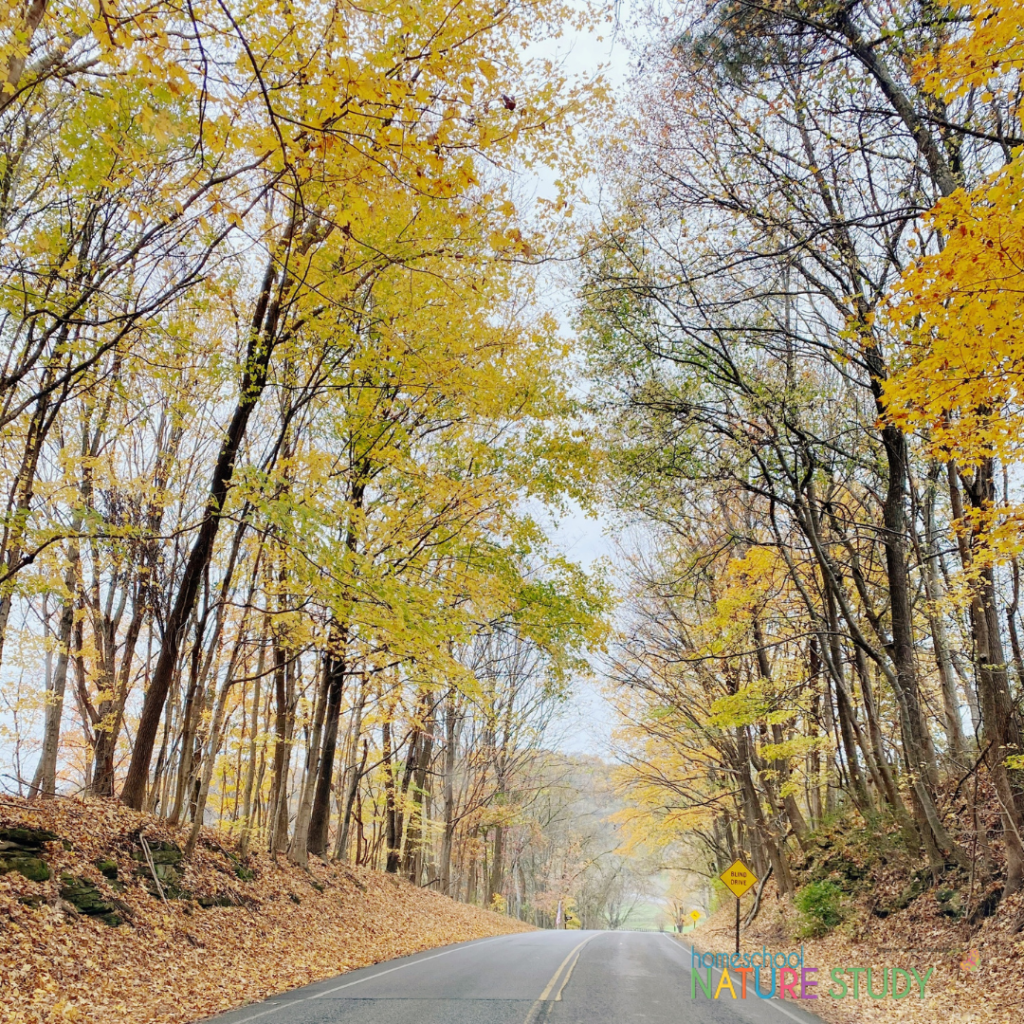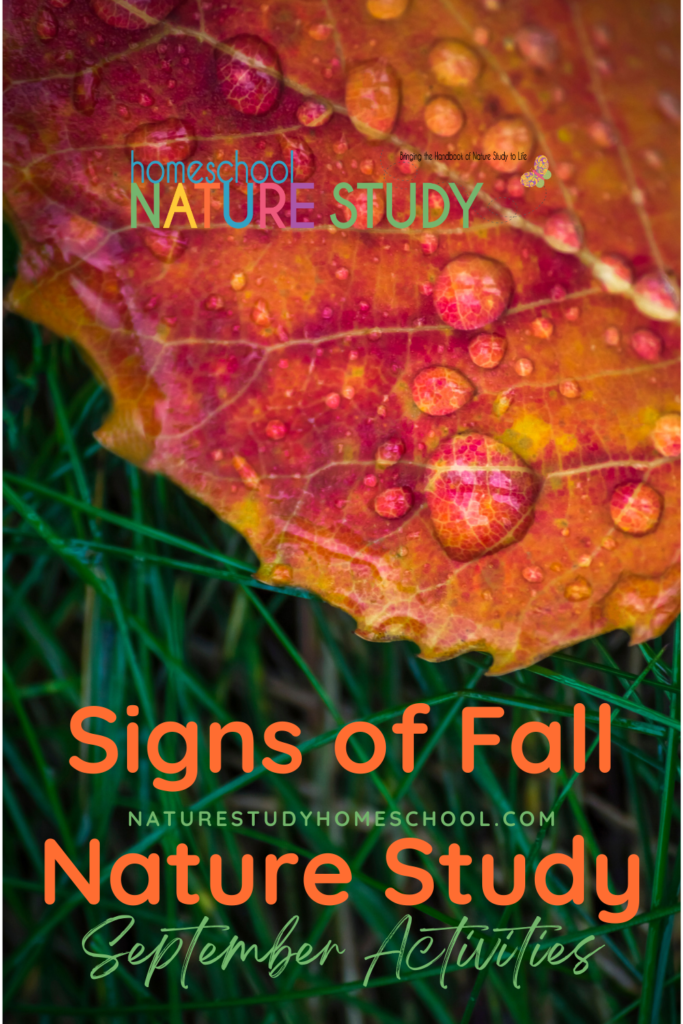Be inspired with 150 homeschool nature study ideas and outdoors sorts of things! Make a list of your own and get outdoors!
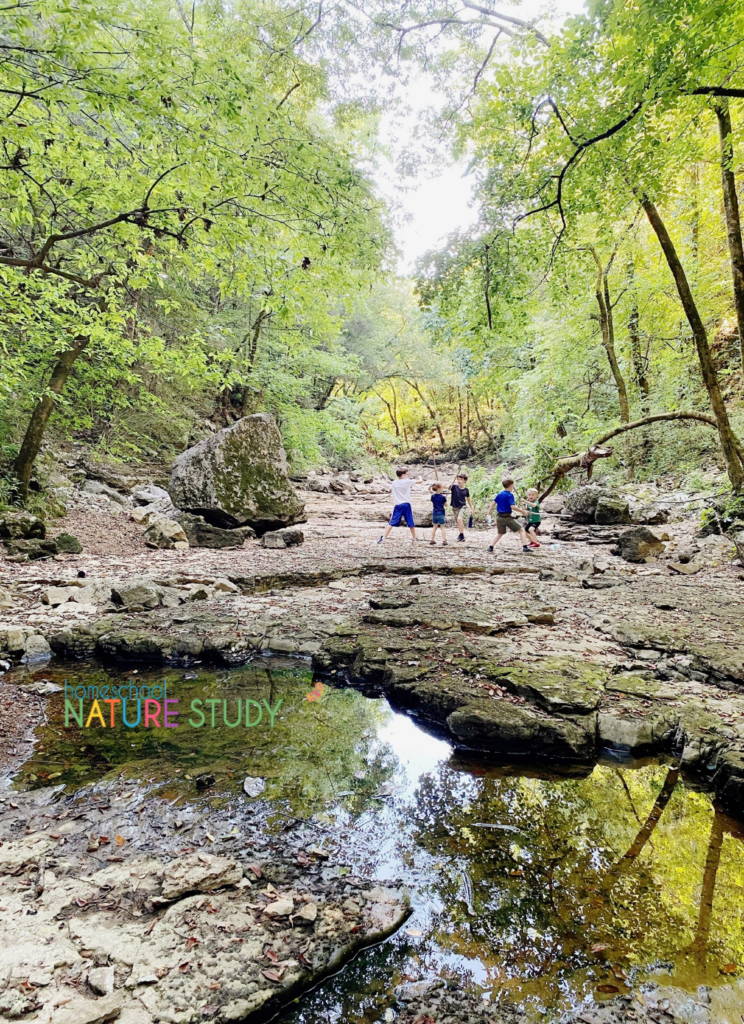
My husband and I were inspired by another meme to make up own of our own. We sat under a blanket one cold morning over a winter break and compiled a list of 150 homeschool nature study ideas and random outdoor sorts of things.
It was fun to list 150 things we have done or would like to do. We decided to narrow the list to things to do in the United States so feel free to use our list or come up with one of your own!
We have not done or experienced all the things on the list *yet* but it is fun to think about how we could check some of the items off the list in the future.
We marked our completed homeschool nature study ideas with a star.
150 Homeschool Nature Study Ideas
Outdoor Hour Challenge – 150 Outdoor Sorts of Things to Do – United States Version
1. Make maple syrup.
2. Stand under a redwood/sequoia. *
3. Ski down a mountain. *
4. See a saguaro cactus. *
5. See an alligator in the wild.
6. Find a shell on a beach. *
7. Skip a rock on a lake. *
8. See a sunrise. *
9. Pick an apple from a tree. *
10. Grow a sunflower. *
11. Sleep under the stars in a sleeping bag.*
12. Find the Big Dipper.*
13. Climb a sand dune. *
14. Walk in the rain with or without an umbrella. *
15. Find a fossil.
16. Take a photo of the Grand Canyon. *
17. Go to the lowest point of North America-Badwater, CA *
18. See a raptor fly. *
19. Be able to identify ten birds.*
20. See a mushroom. *
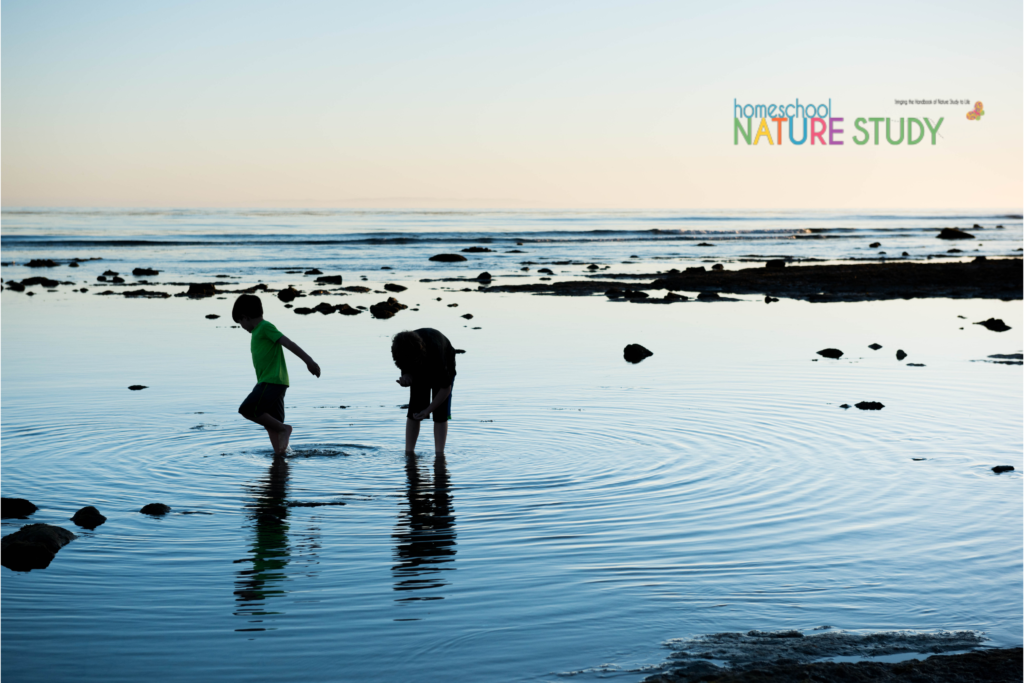
21. Visit a tide pool. *
22. Visit a volcano. *
23. Feel an earthquake. *
24. See a tornado.
25. Experience a hurricane.
26. Catch snow on your tongue. *
27. See a deer in the wild. *
28. Touch a dolphin.
29. Go ice skating on a pond.
30. Go fishing. *
31. Go snorkeling.*
32. Whittle a stick. *
33. Gather chicken eggs.
34. Milk a cow or a goat.
35. Ride a horse. *
36. See a moose. *
37. Gather acorns.*
38. Pick berries and eat some.*
39. Watch a lightning storm. *
40. Build a campfire.*
41 Press a flower.*
42. Use binoculars to spot a bird. *
43. Identify five wildflowers. *
44. Take a photo of Half Dome. *
45. Find a piece of obsidian. *
46. See a tumbleweed. *
47. See a wild snake.*
48. Watch a spider spin a web. *
49. Climb a tree. *
50. Get lost on a hike. *
51. Watch ants in a colony. *
52. Hatch a butterfly. *
53. Climb a rock. *
54. See the Continental Divide. *
55. See a ladybug.*
56. See a bear in the wild. *
57. Dig for worms. *
58. Grow a vegetable and then eat it. *
59. See a bat flying. *
60. Feel a sea star. *
61. Swim in the ocean.*
62. See a geyser erupt.*
63. Walk in the fog. *
64. Observe a bee.*
65. Find a bird’s nest. *
66. See a beaver’s den.*
67. Go whale watching. *
68. See a banana slug. *
69. Stand on the edge of a cliff.*
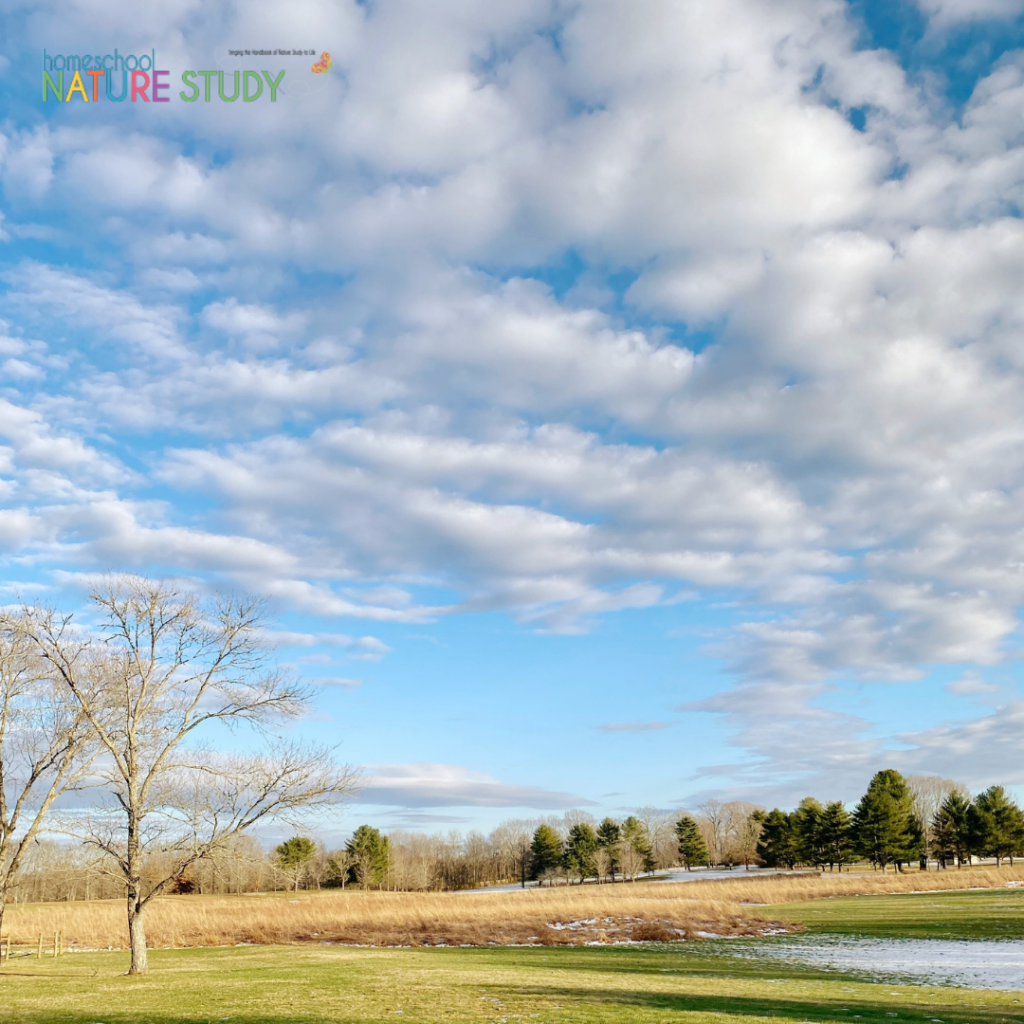
70. Blow a dandelion. *
71. Throw a snowball and build a snowman.*
72. Cook an egg on the sidewalk…can you actually do that?
73. See a lightning bug. Or do you call it a firefly?*
74. Visit a cave. *
75. Make a sandcastle. *
76. Hear a cricket. *
77. Catch a frog.
78. Watch for the first star in the evening.*
79. Smell a skunk. *
80. Feel pine sap. *
81. Feed a duck. *
82. Learn to use a compass or GPS.*
83. See a buffalo. *
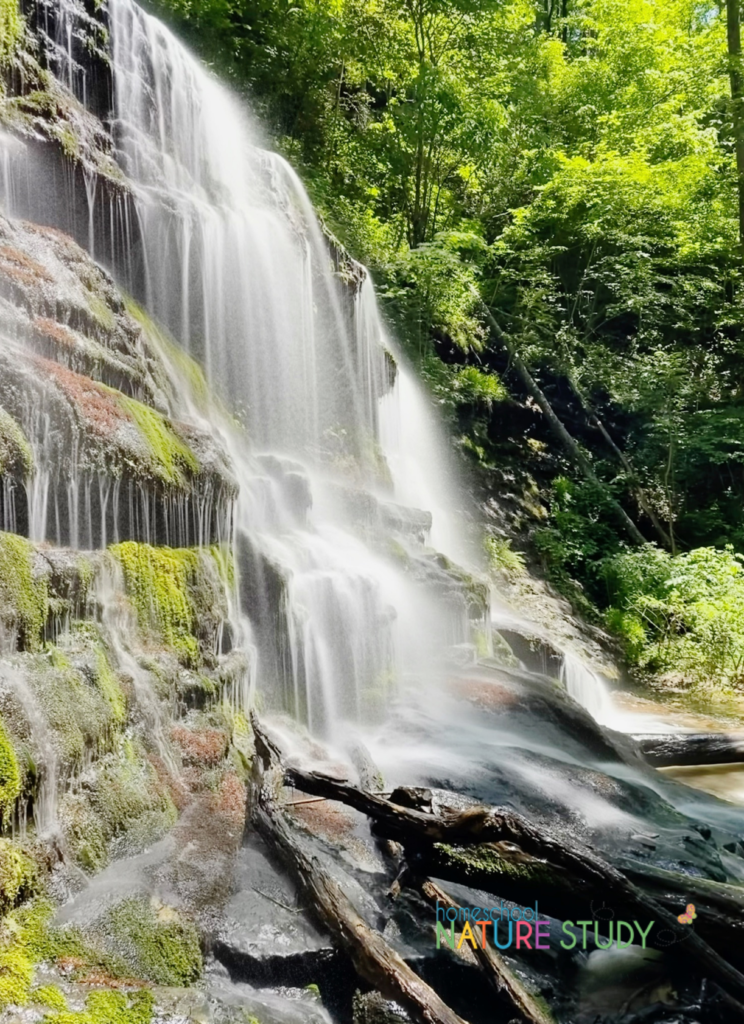
84. Get wet in a waterfall. *
85. Swim in a lake. *
86. Walk on a log. *
87. Feel moss.*
88. Jump in a pile of leaves. *
89. Fly a kite. *
90. Walk barefoot in the mud. *
91. Hear a sea lion bark. *
92. Hear a coyote. *
93. Pan for gold. *
94. Crack open a nut. *
95. Go snowshoeing. *
96. Feel a cattail. *
97. Smell a pine forest. *
98. Sit under a palm tree.*
99. Walk across a stream on rocks.*
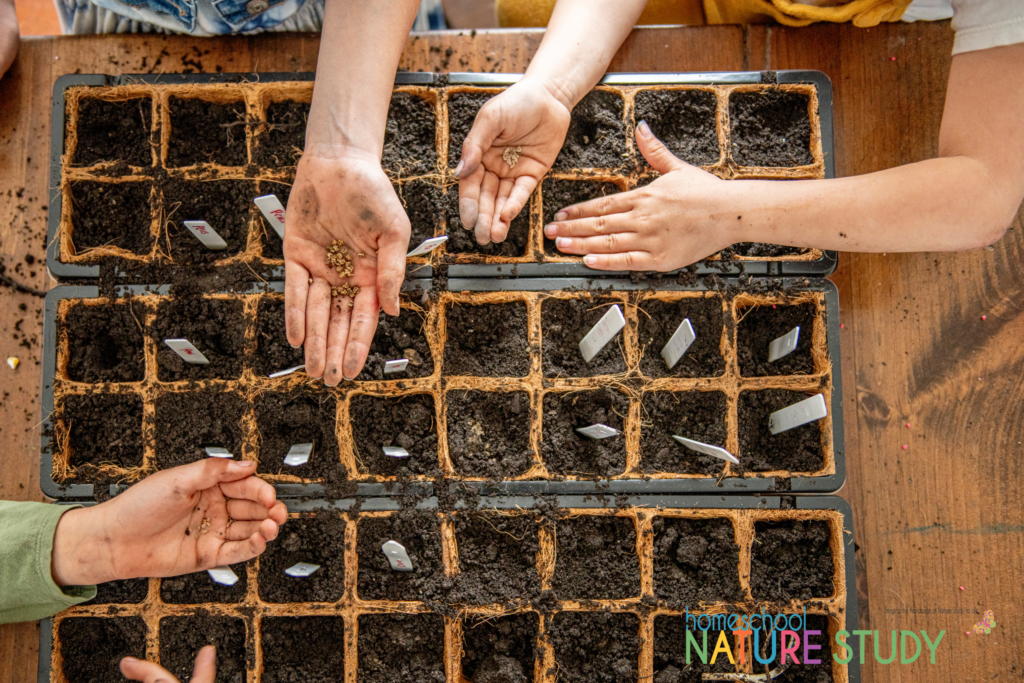
100. Plant a rainbow.*
101. Compare seeds.*
102. Gaze at the northern lights. *
103. Explore the subnivean zone.
104. Create a winter garden. *
105. Watch bald eagles.*
106. Hear an elk. *
107. Take a leaf art nature walk. *
108. Go on a pumpkin field trip. *
109. Read a nature book outdoors. *
110. Hear a woodpecker. *
111. Watch a squirrel gather acorns. *
112. Make a leaf mask. *
113. Plant a bulb. *
114. Explore the seashore.*
115. Gaze at the moon.*
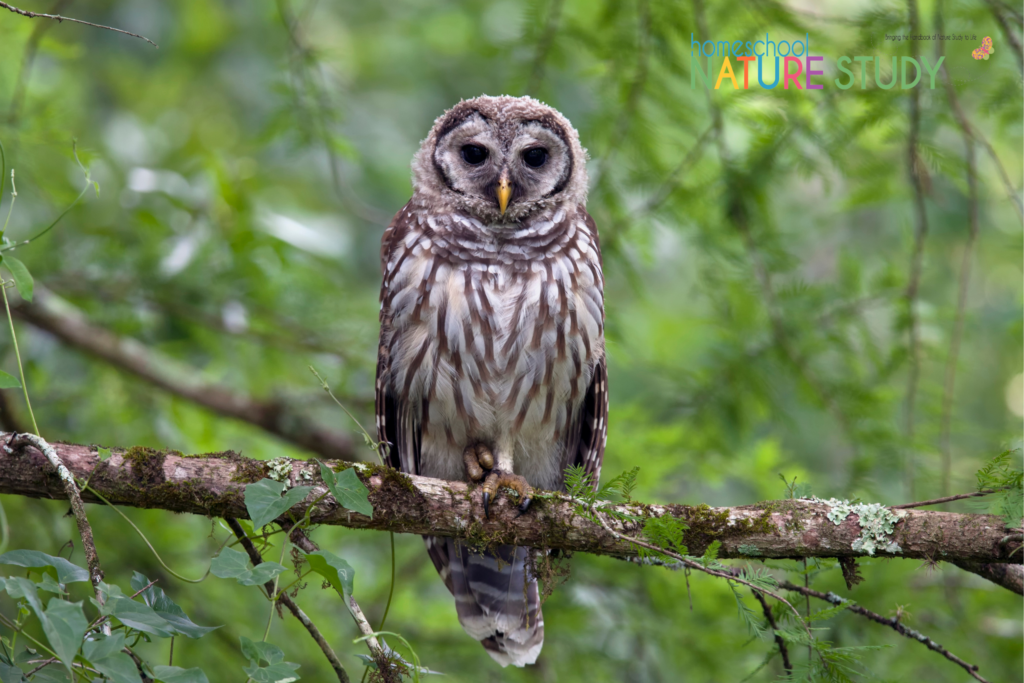
116. Listen for an owl. *
117. Play in a creek. *
118. Watch fish. *
119. Find tadpoles.*
120. Watch hummingbirds.*
Then add these 30 MORE for 150 nature study ideas!
30 Backyard Family Activities! These 30 backyard family activities help you have fun outdoors with your children in a way that is easy and fun! Ever get the “Mom, I’m bored” line from your kids? Boredom is often the gateway to greater use of the child’s imagination, and saying “I’m bored” in our house usually receives the answer, of “go play outside. . . build a fort, climb a tree, watch a bug. . . or something like that.” Two hours later, that kid will come back in and say, “Mom, come see what I built/did/saw!” And, it’s usually pretty fantastic.
What would you add to the list?
More Resources For Homeschool Nature Study
For even more homeschool nature study ideas, join us in Homeschool Nature Study membership! You’ll receive new ideas each and every week that require little or no prep – all bringing the Handbook of Nature Study to life in your homeschool!
Be inspired. Be encouraged. Get Outdoors!

first published January 2009 by Barb

